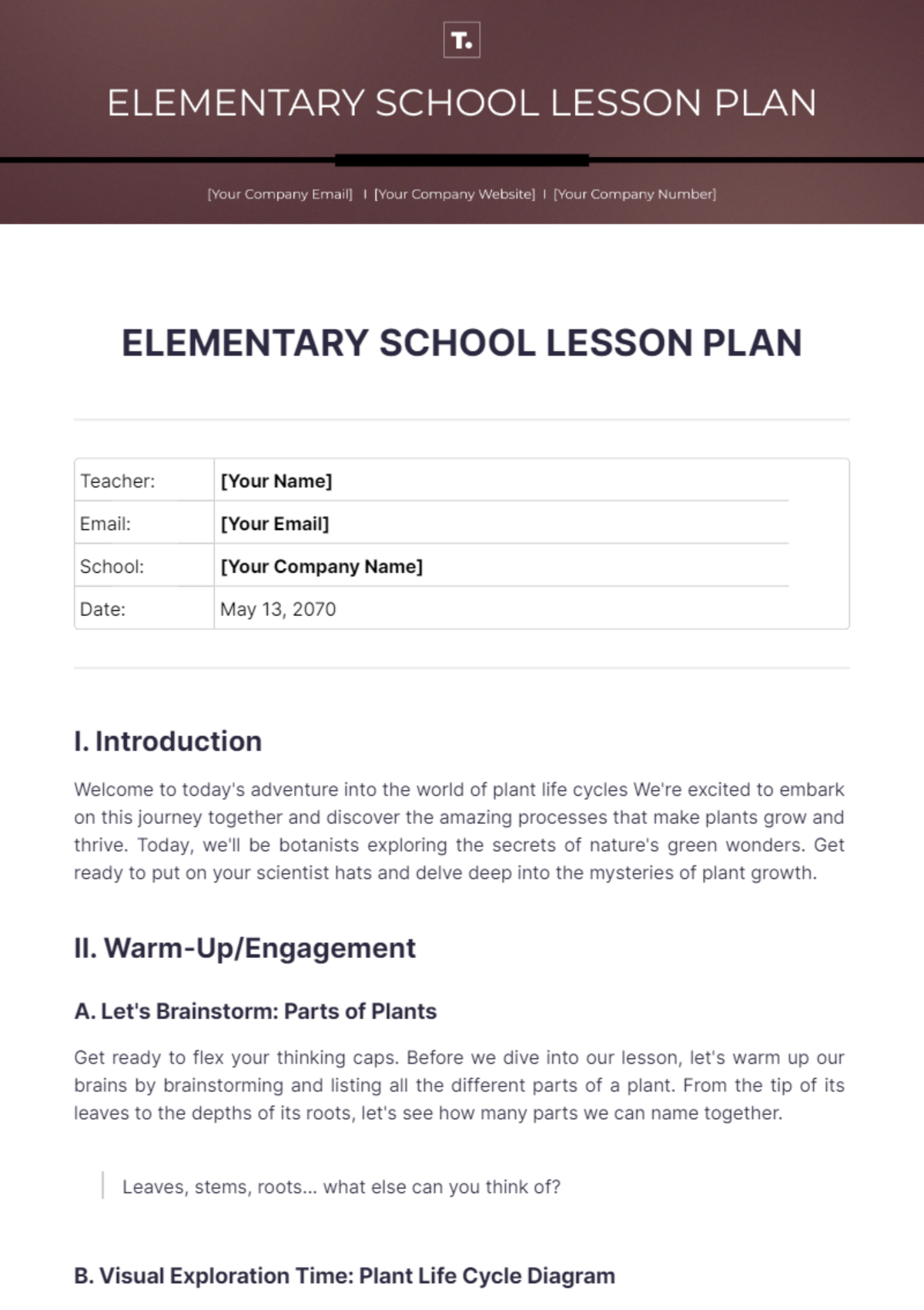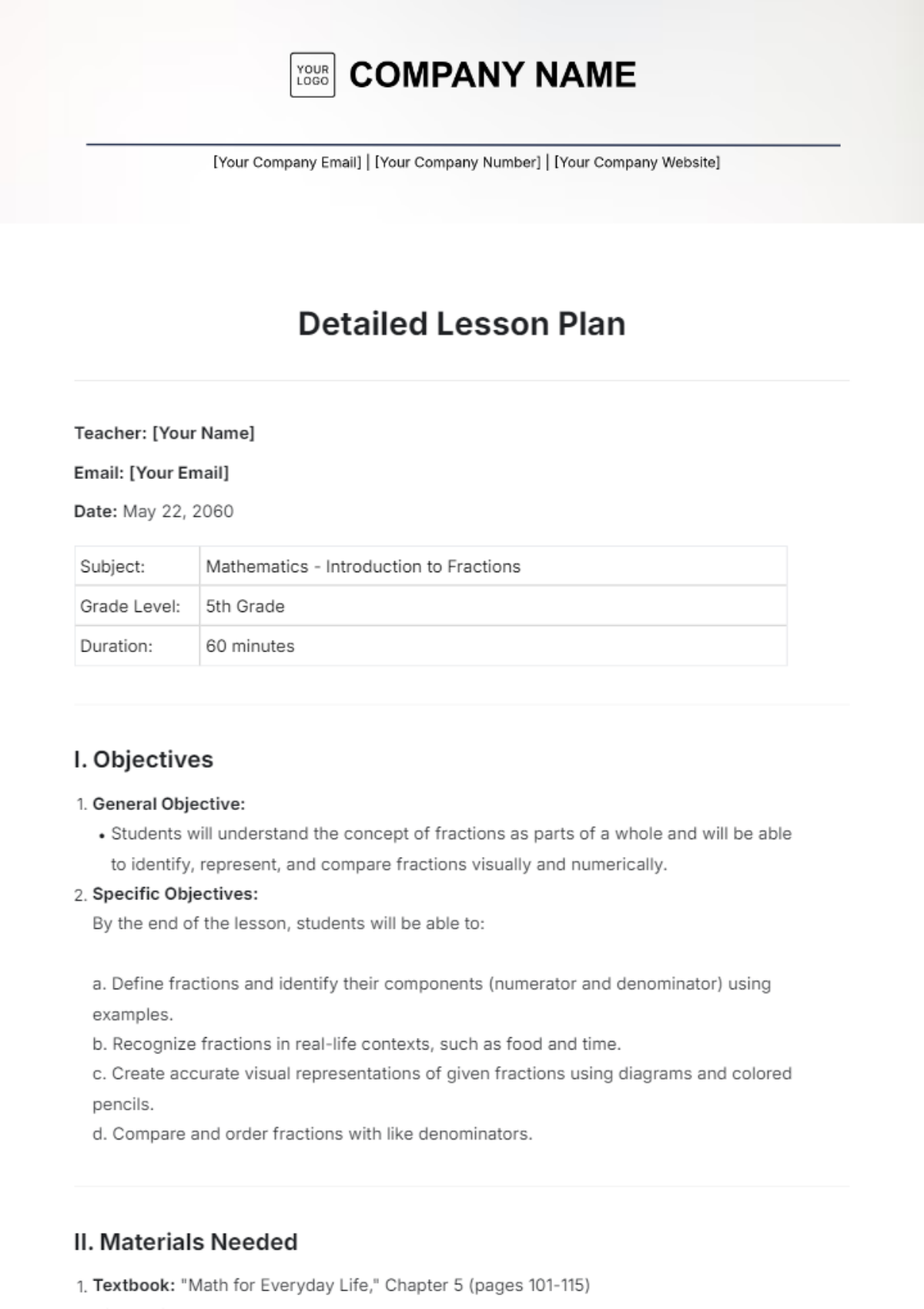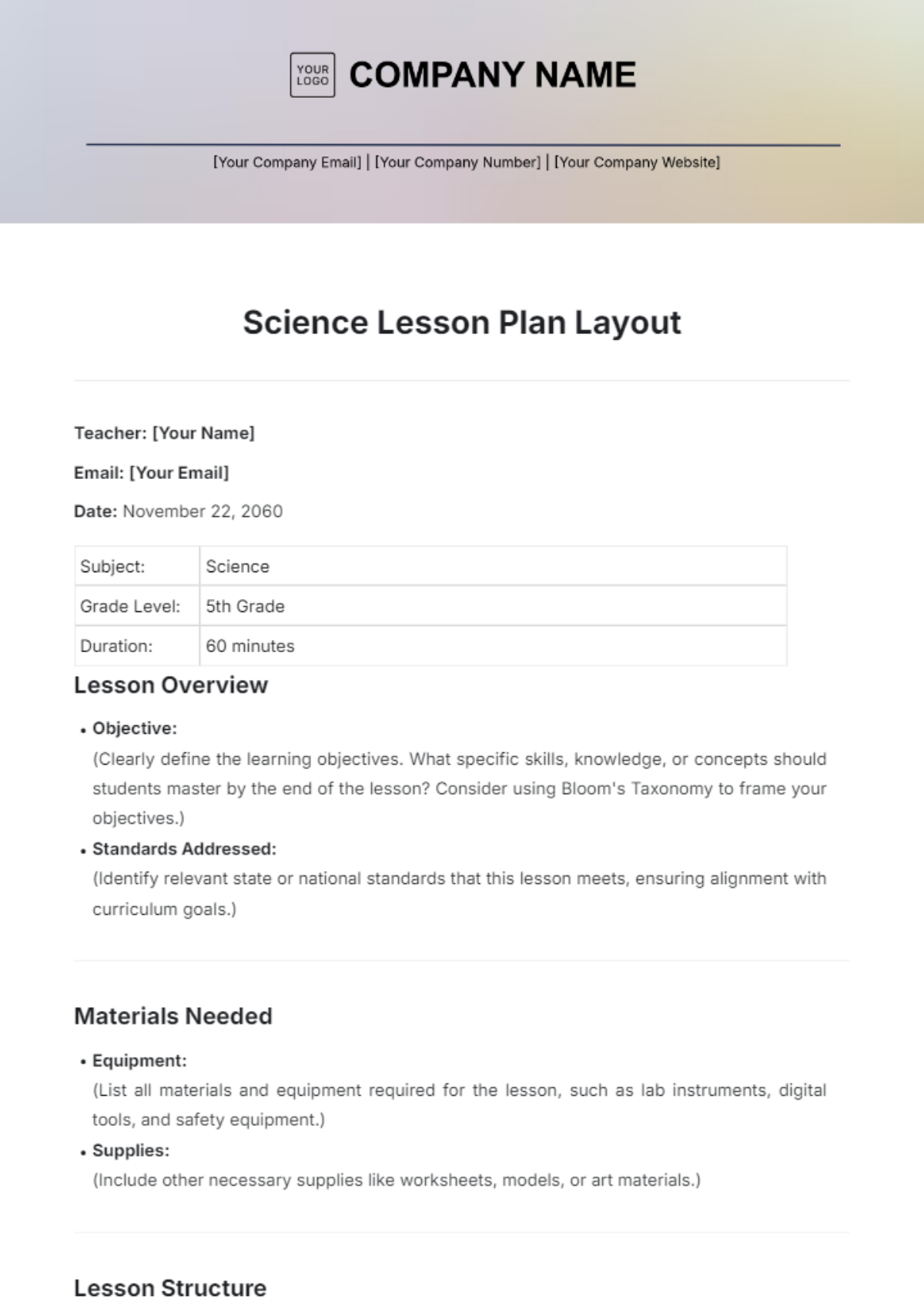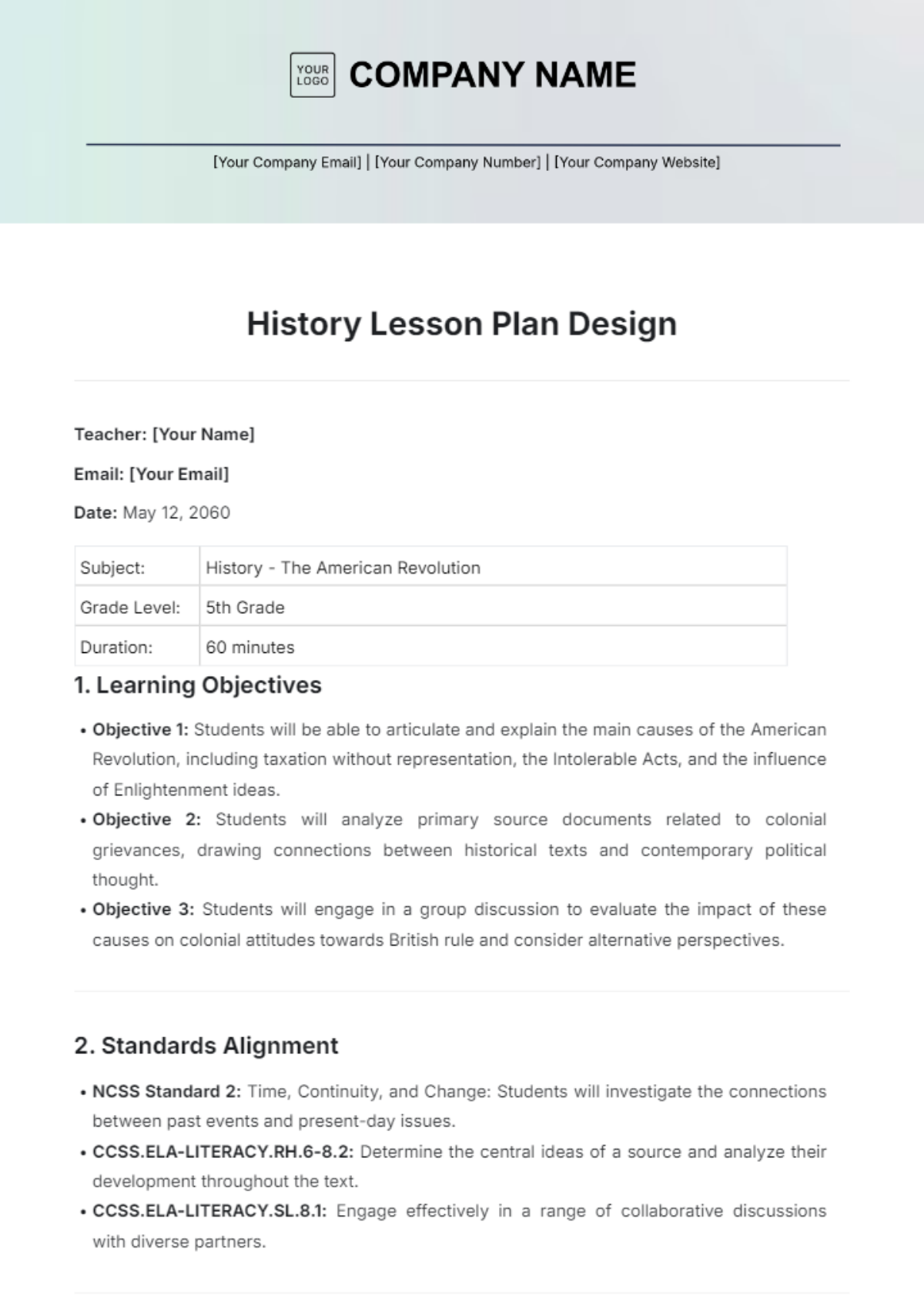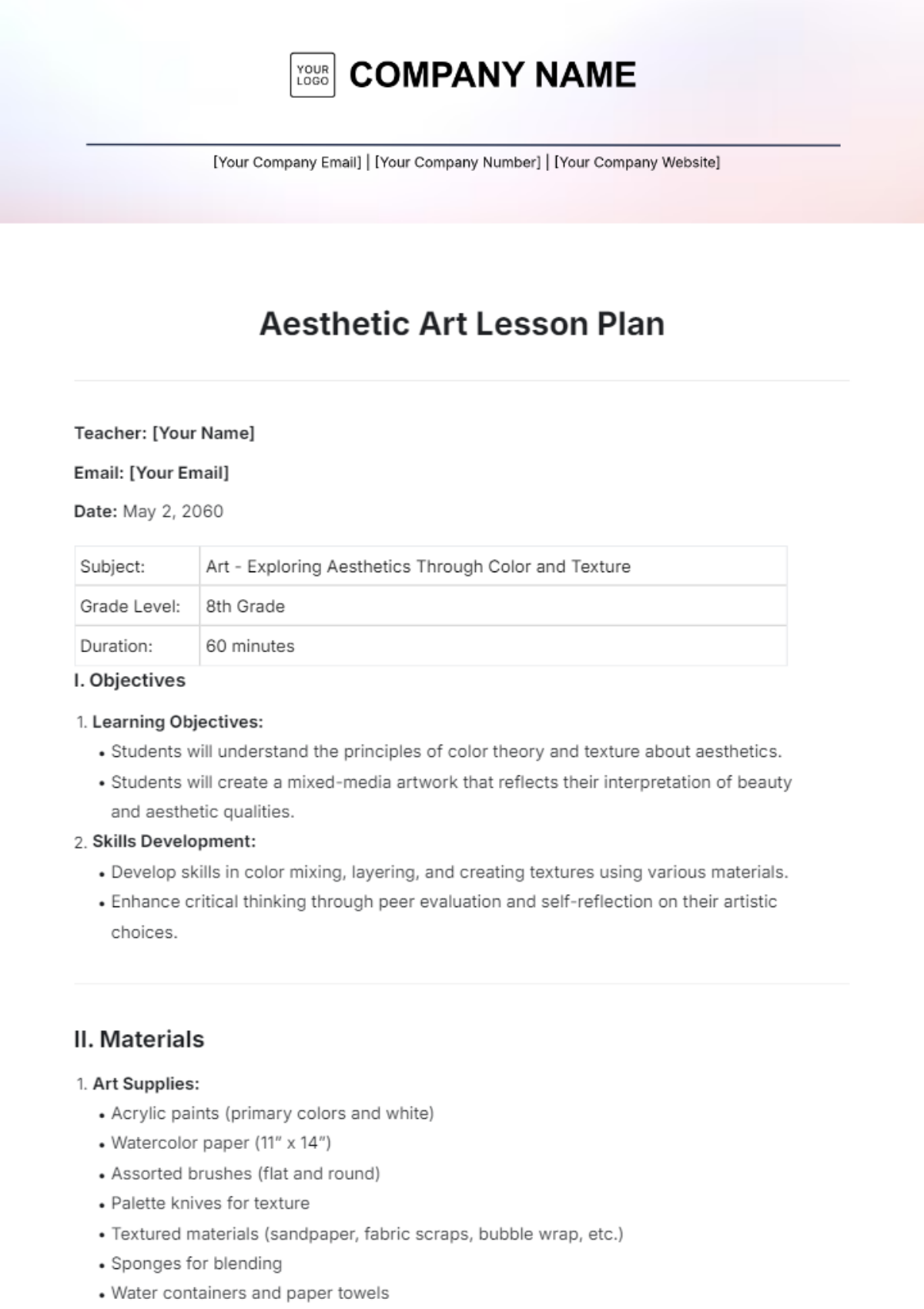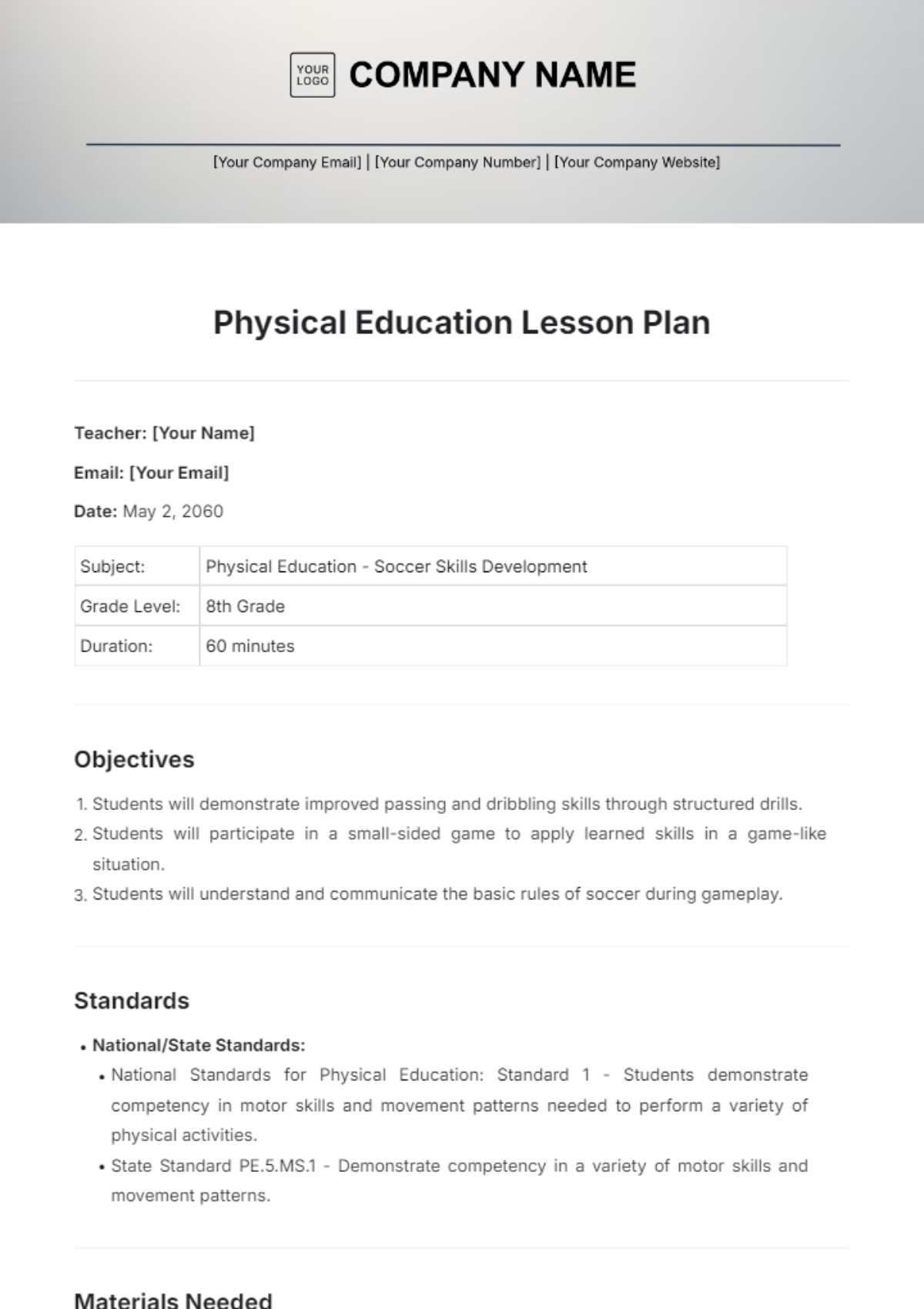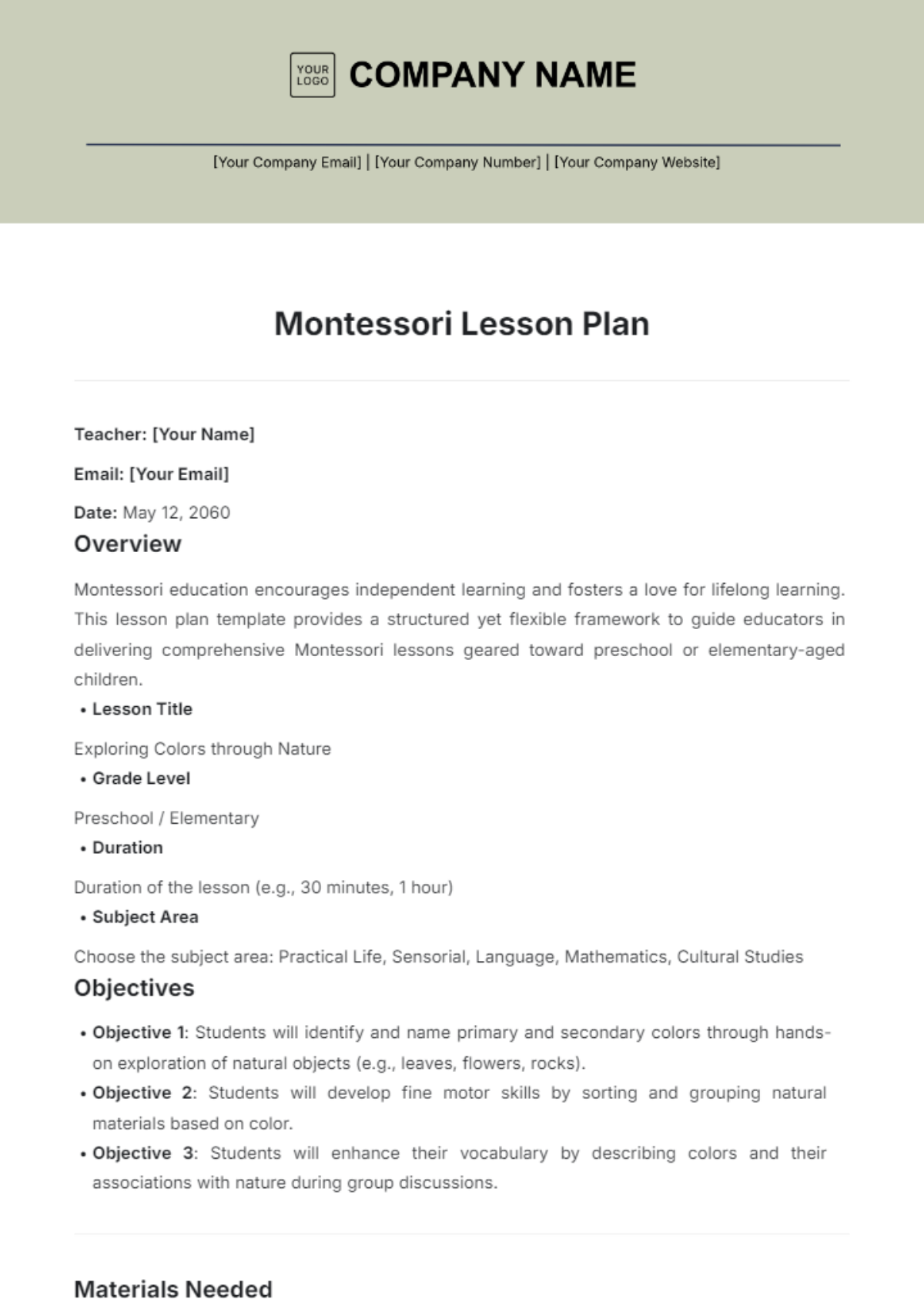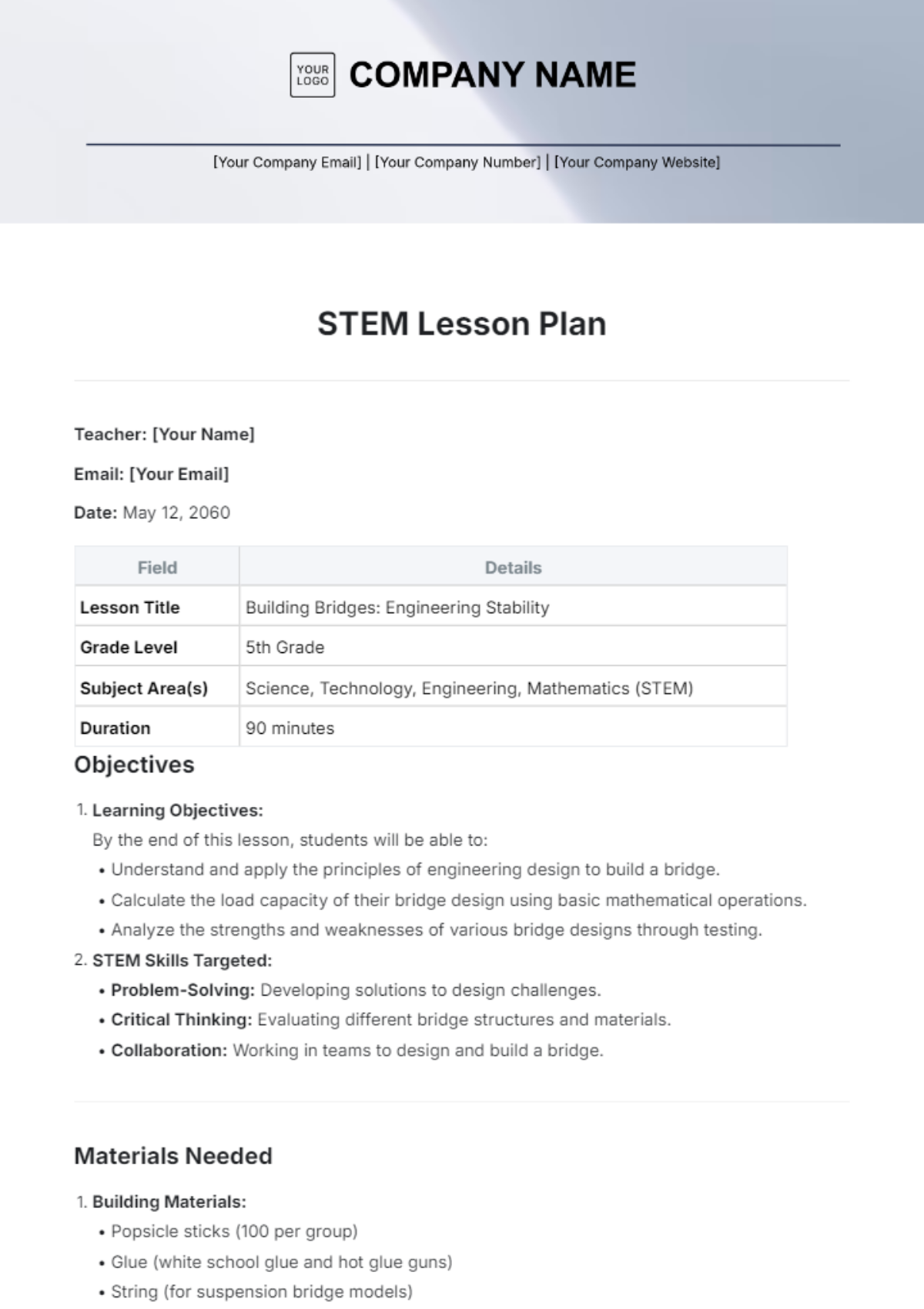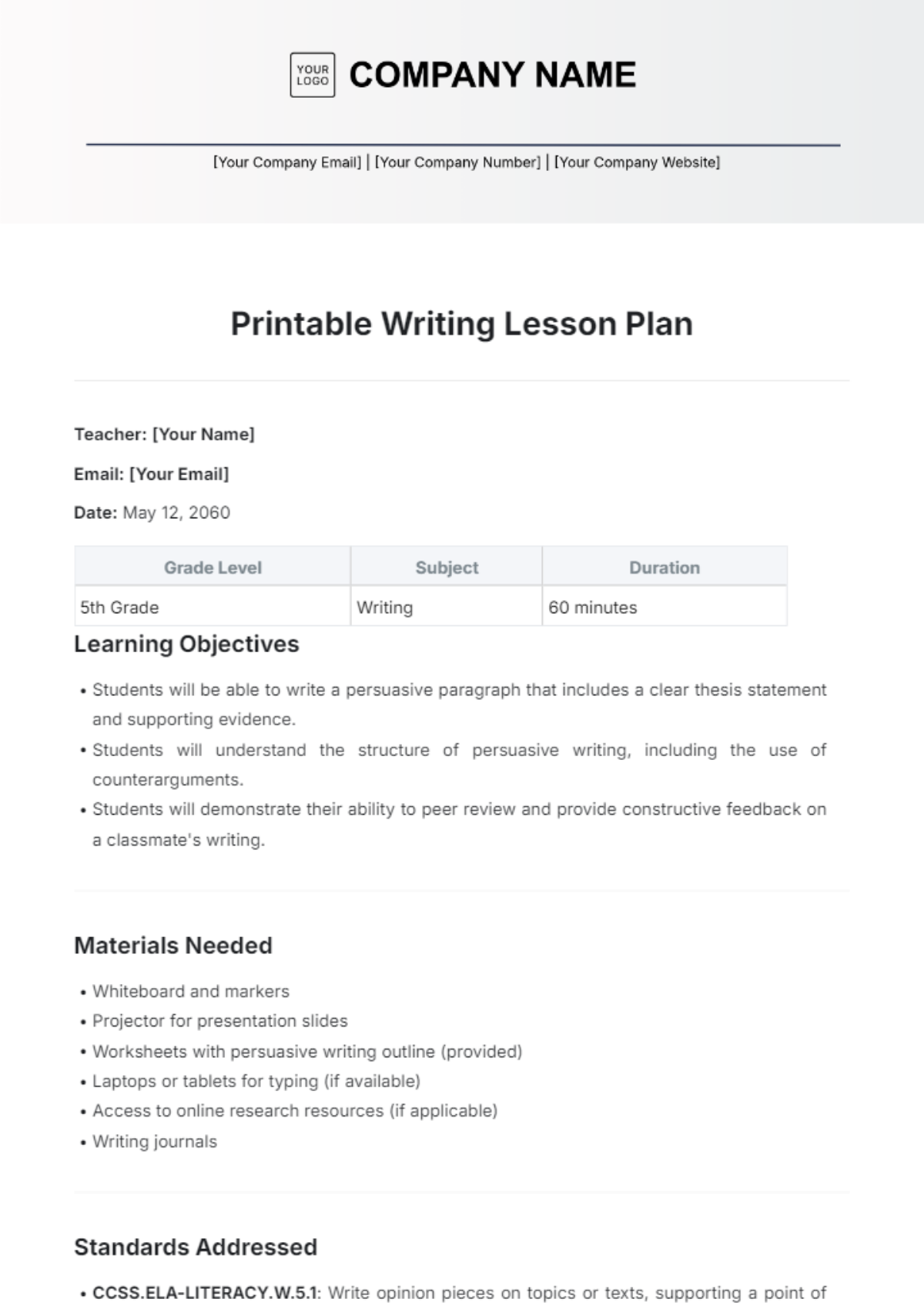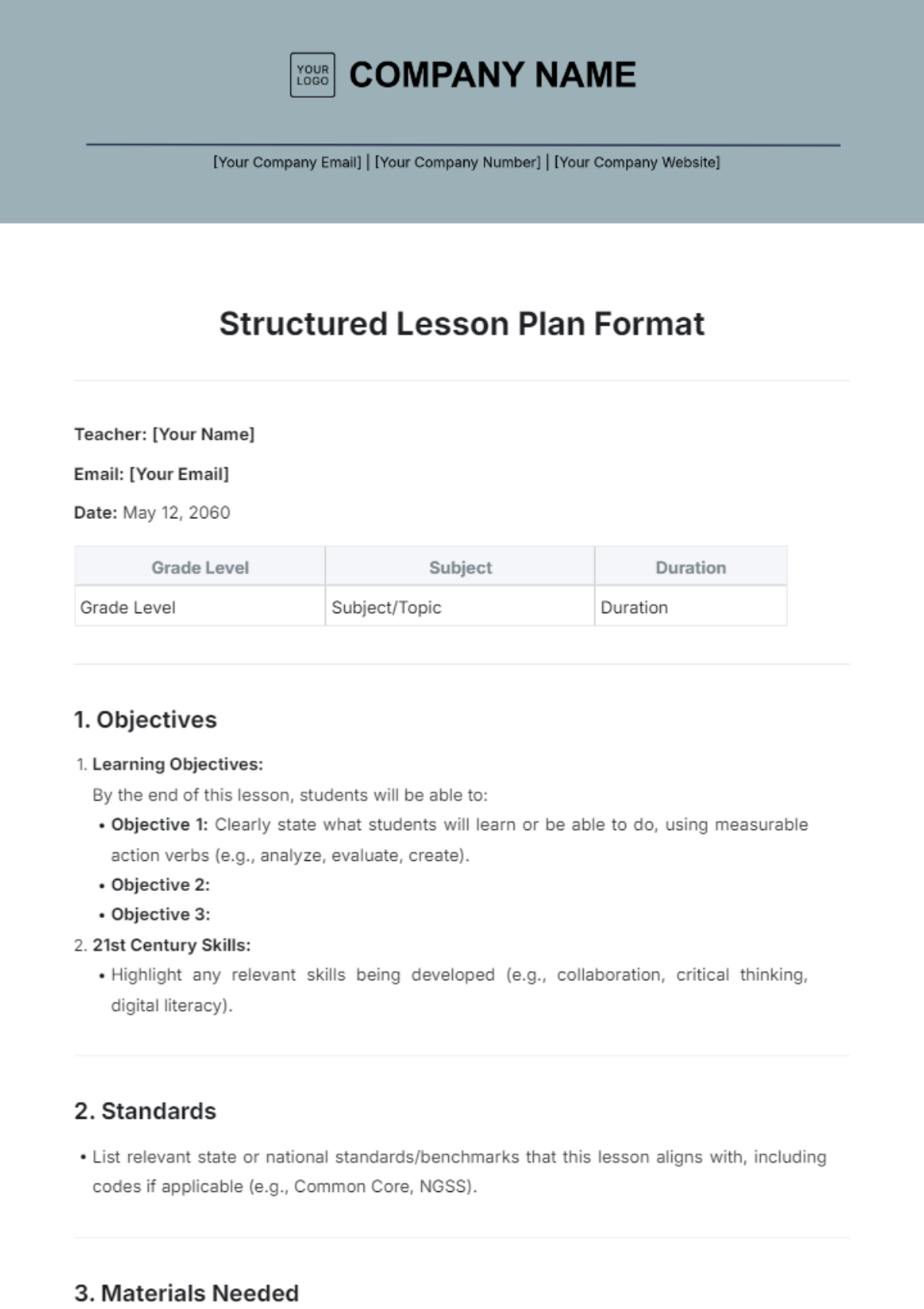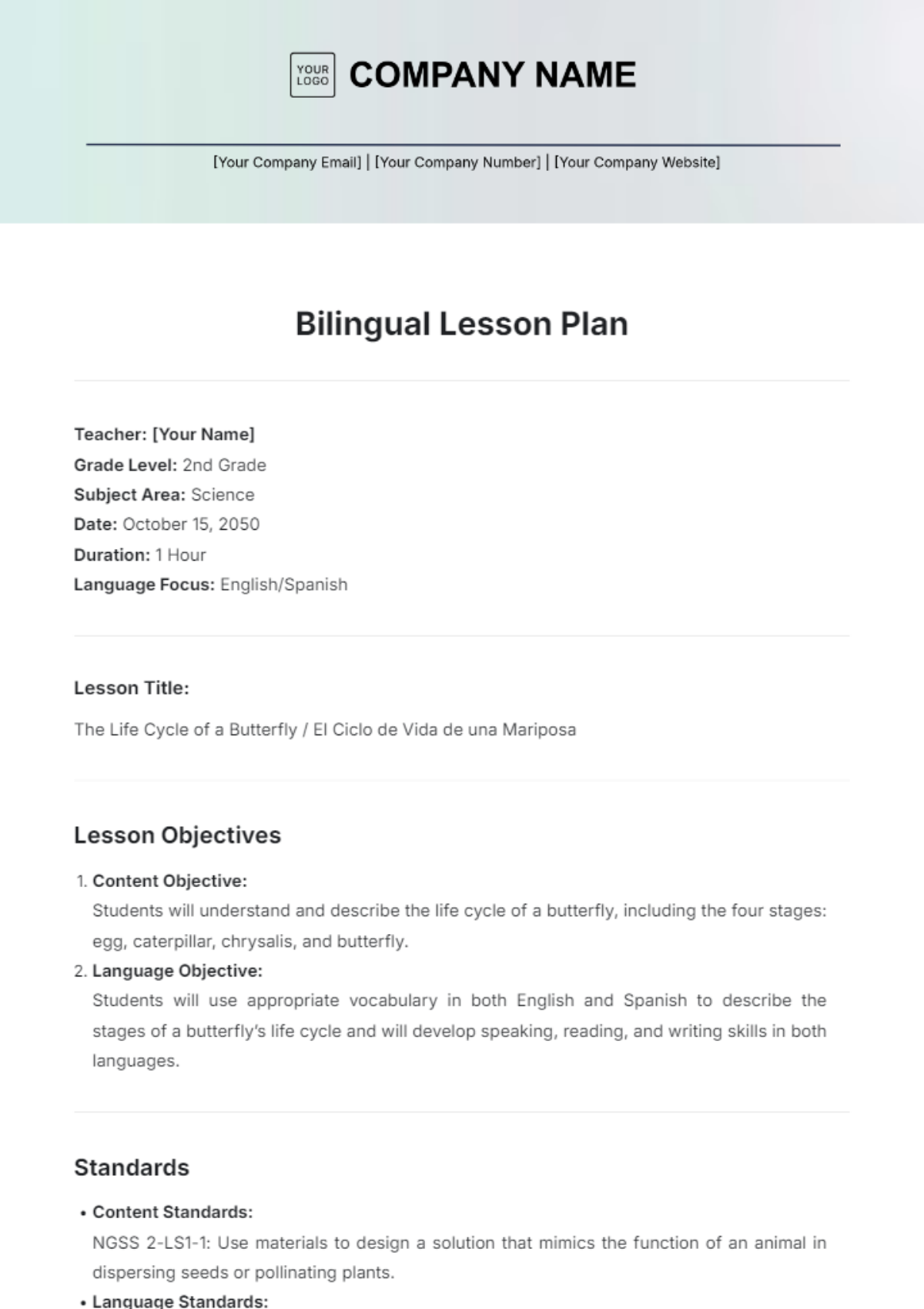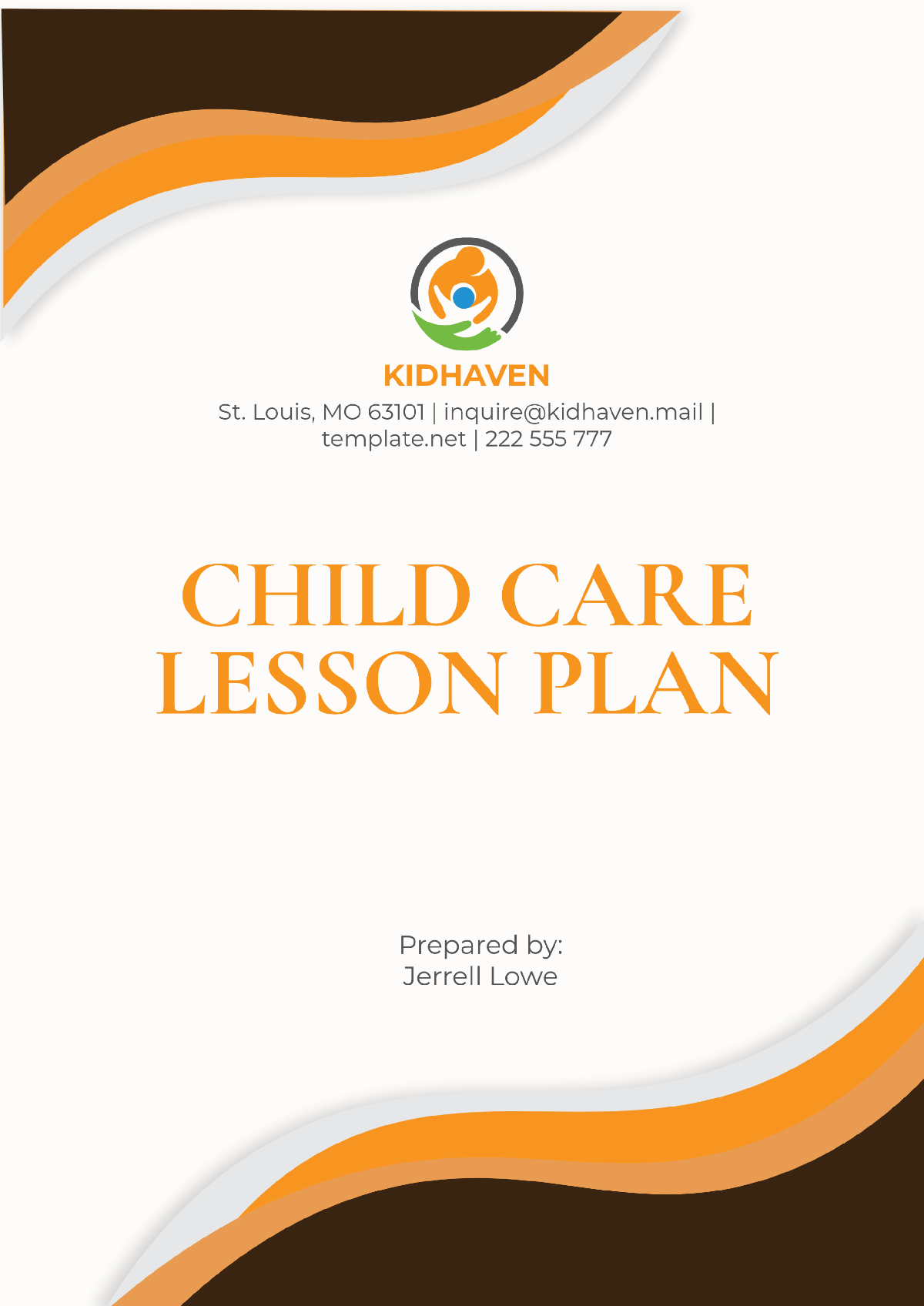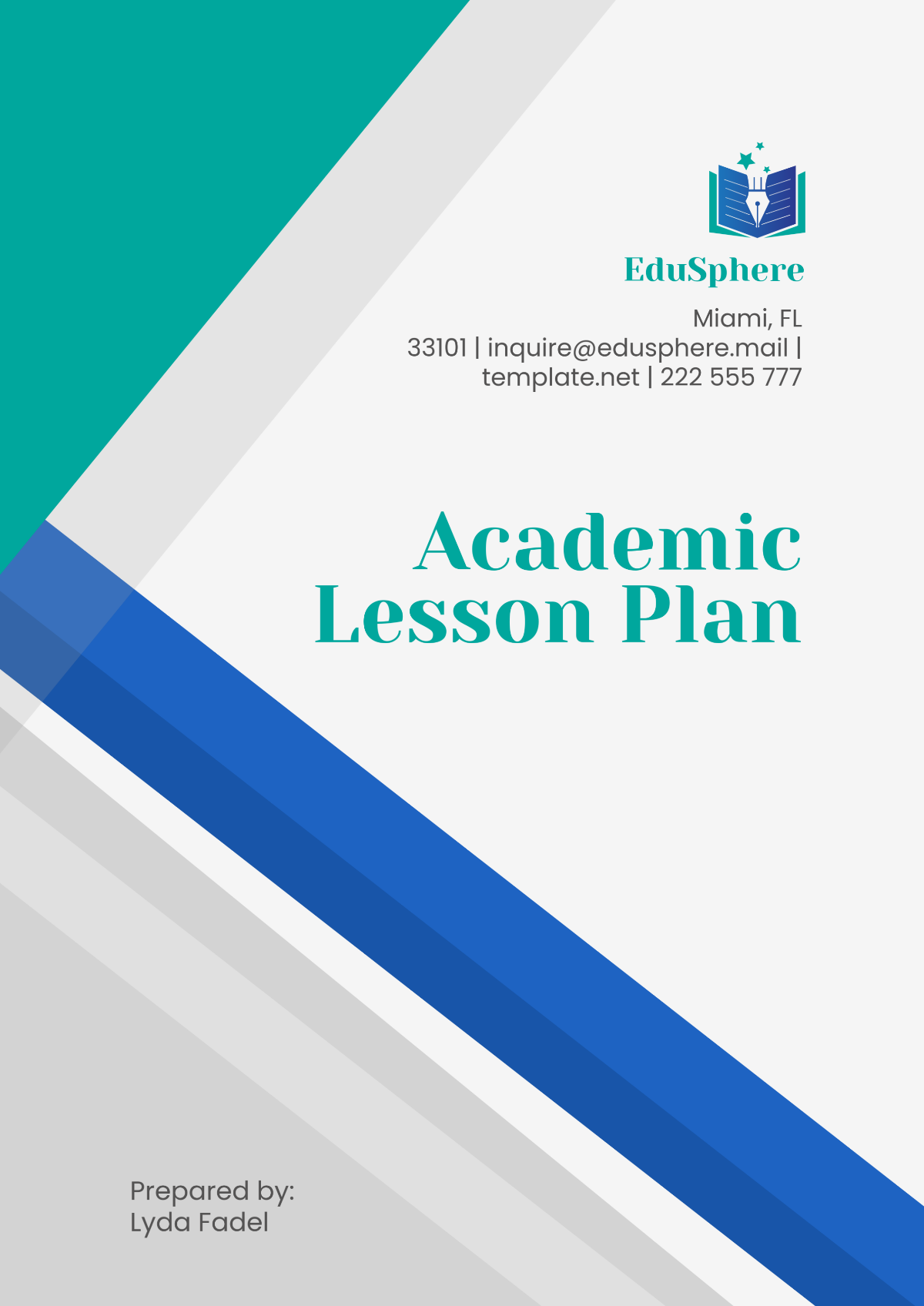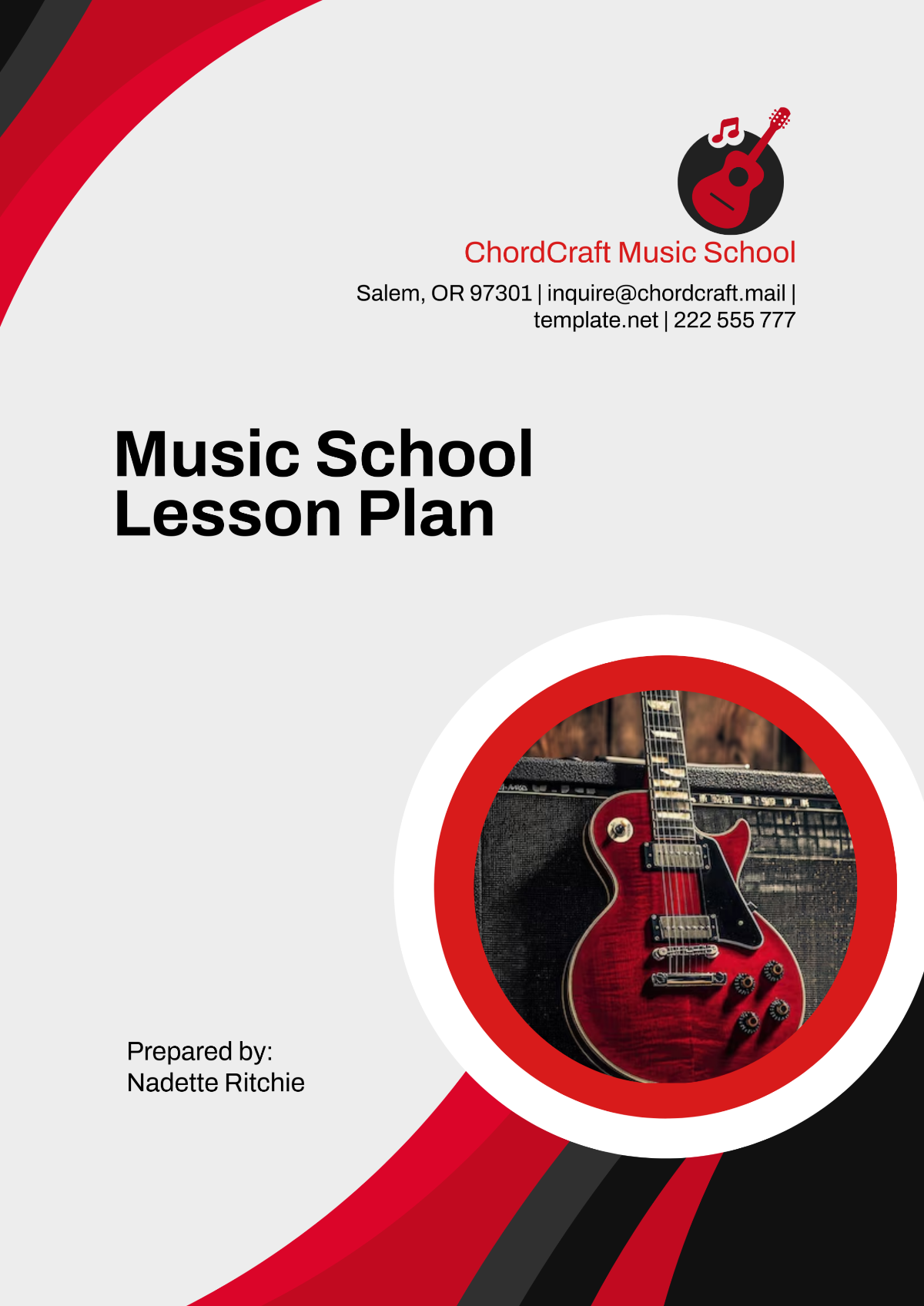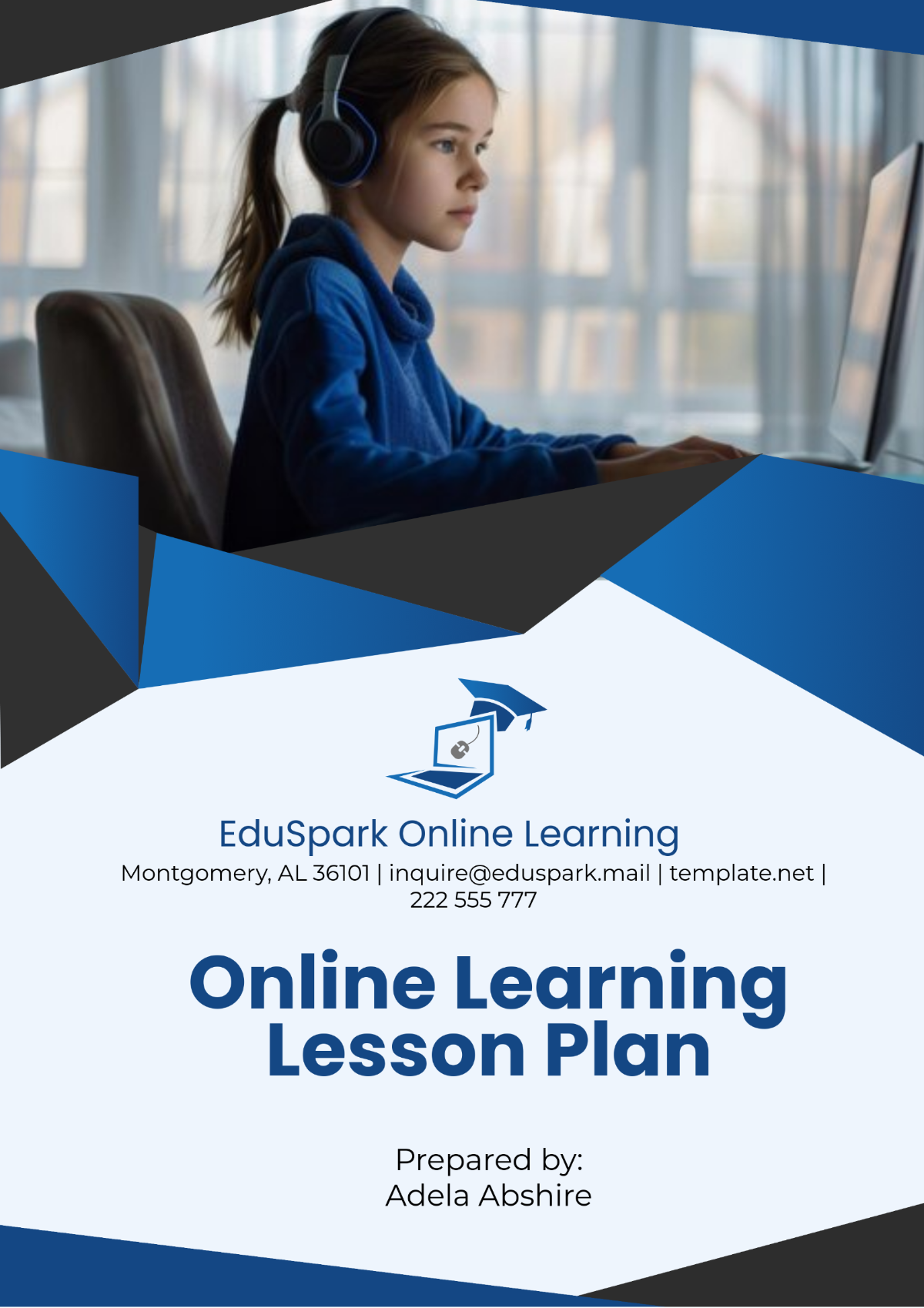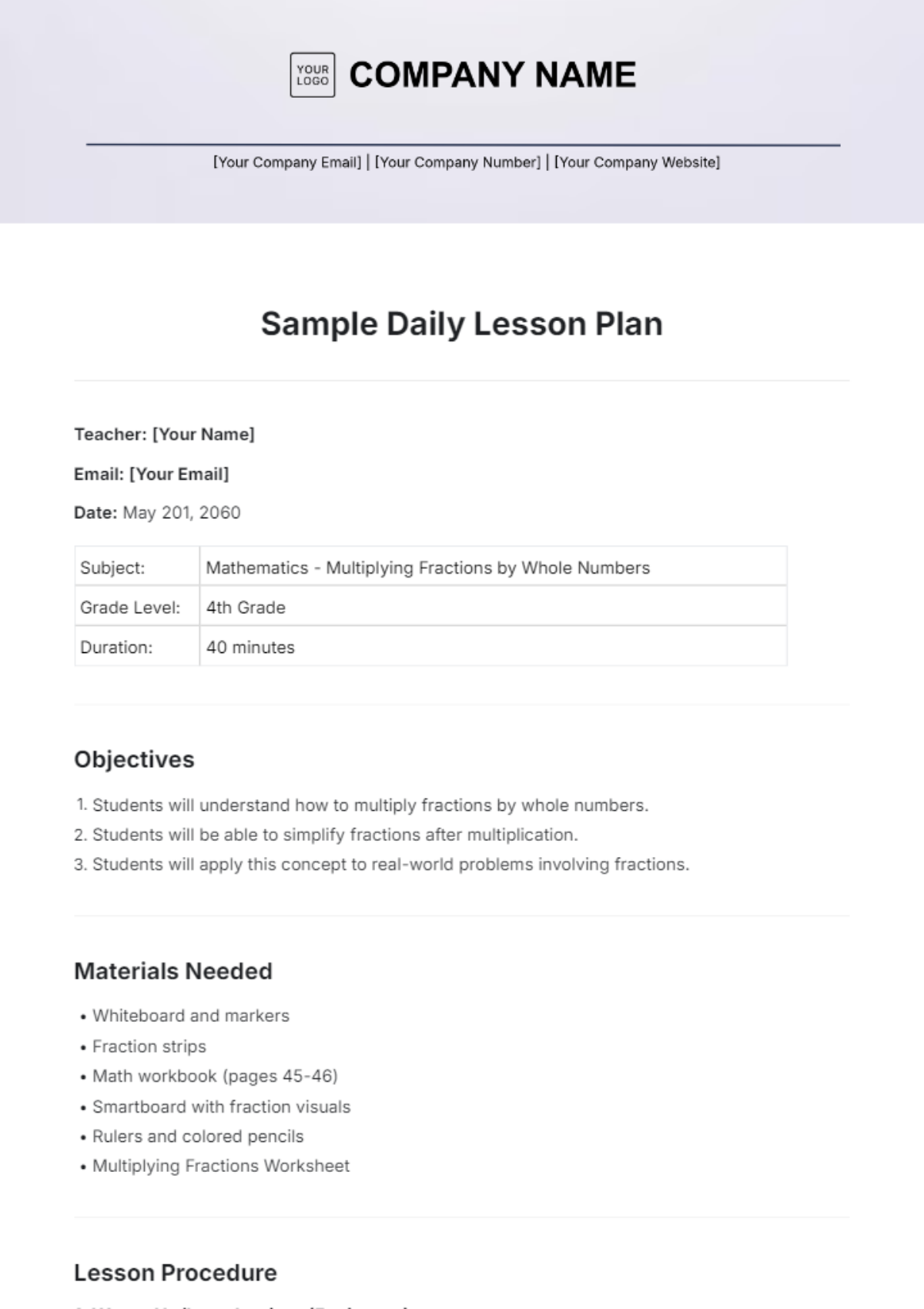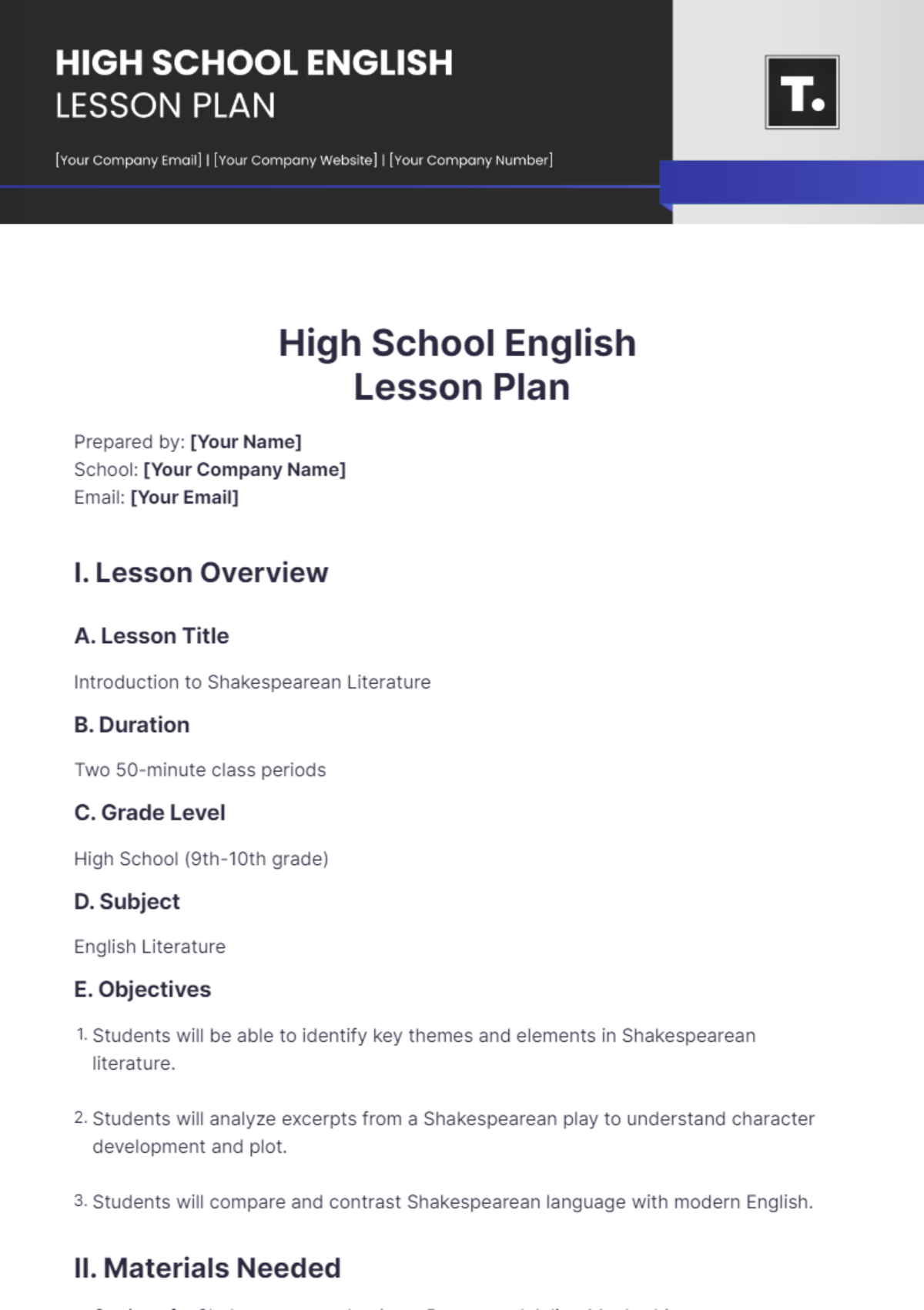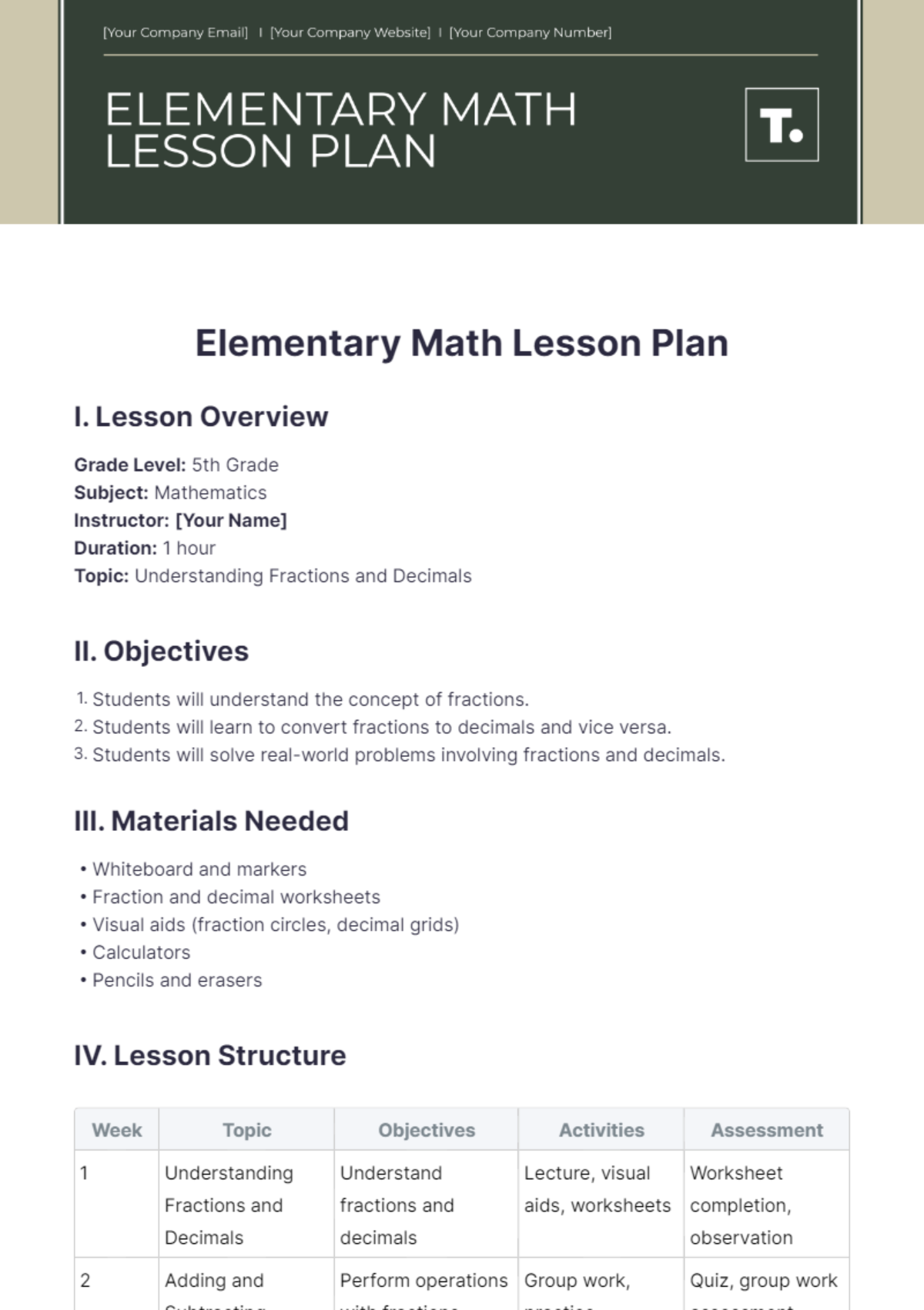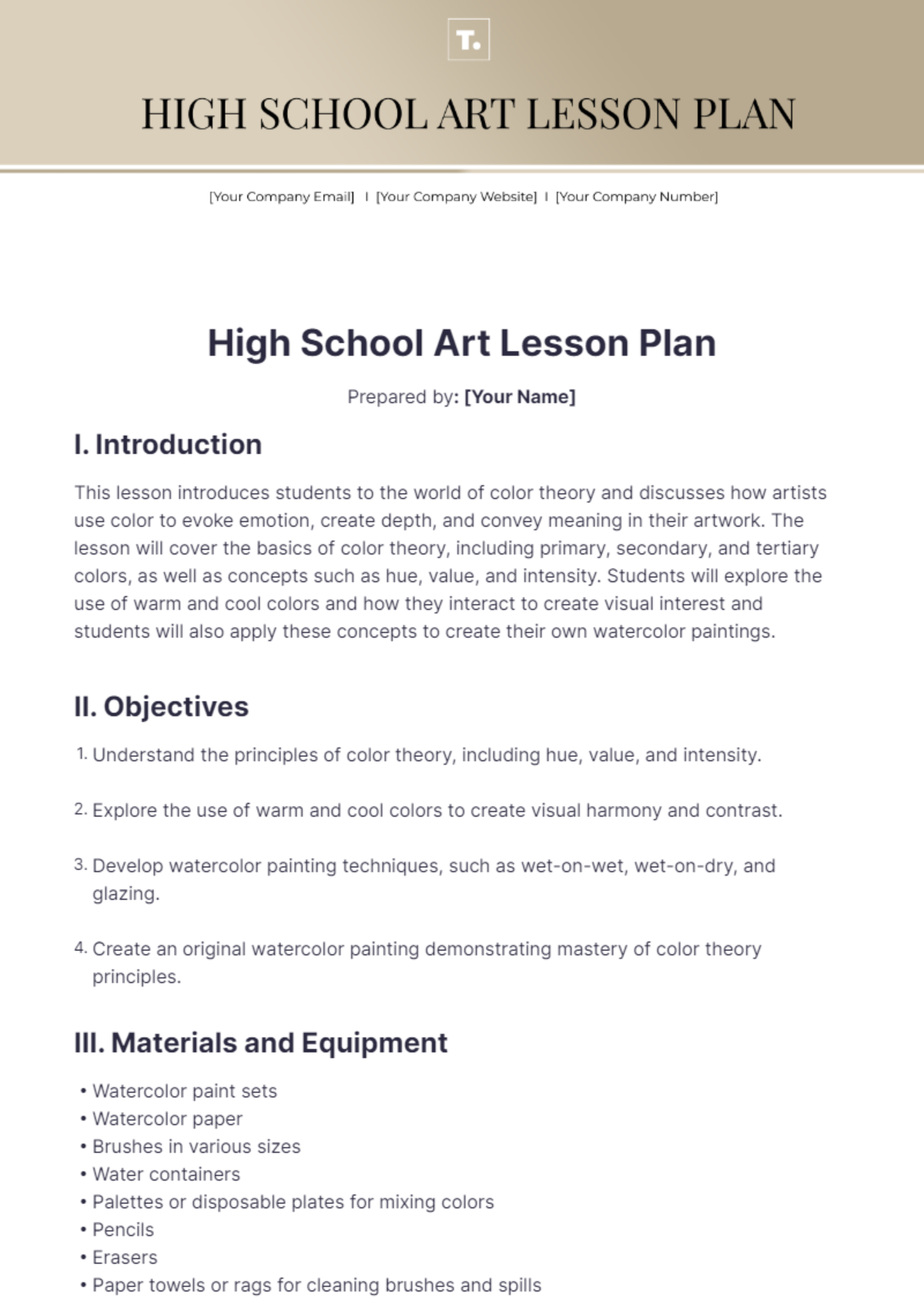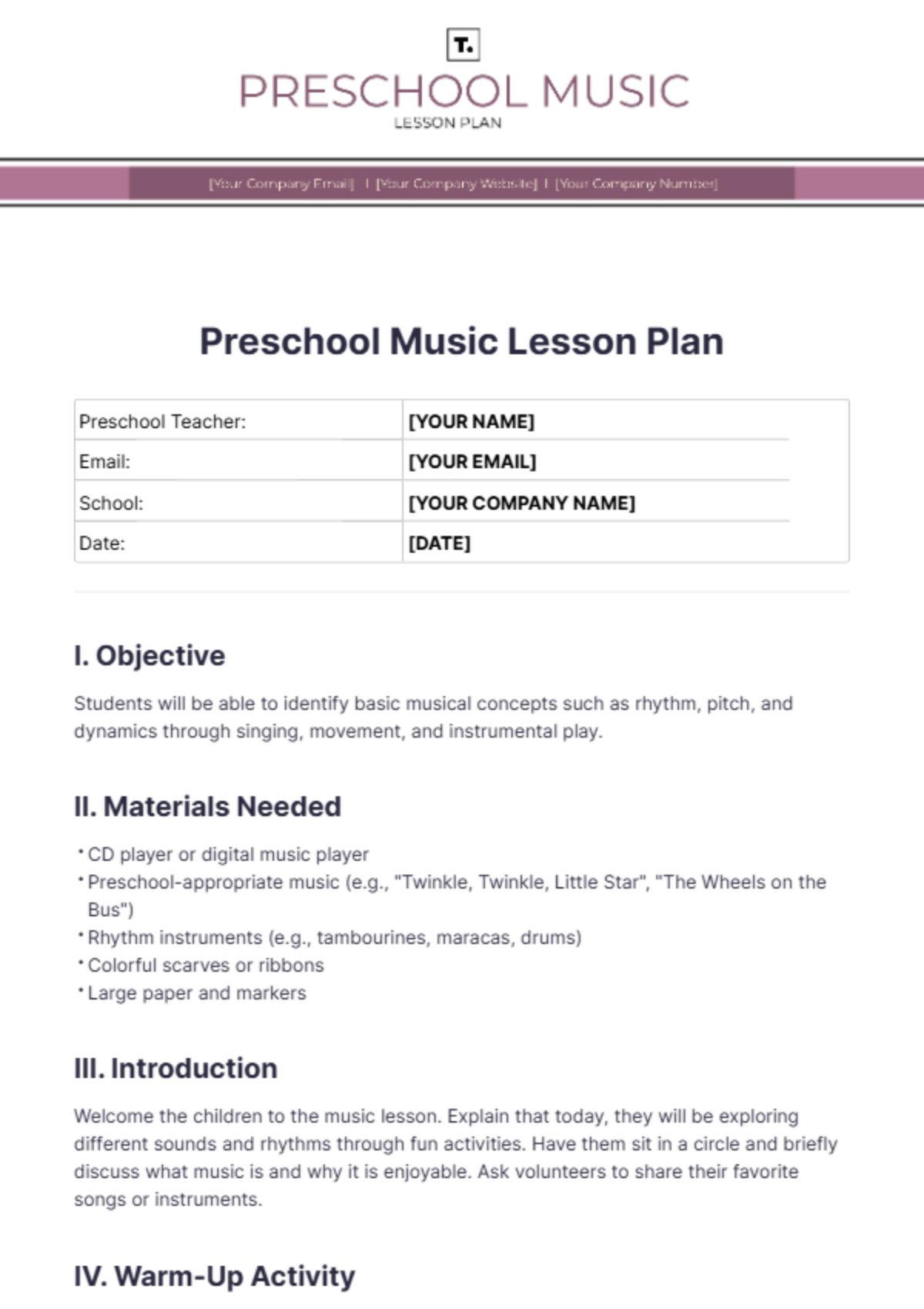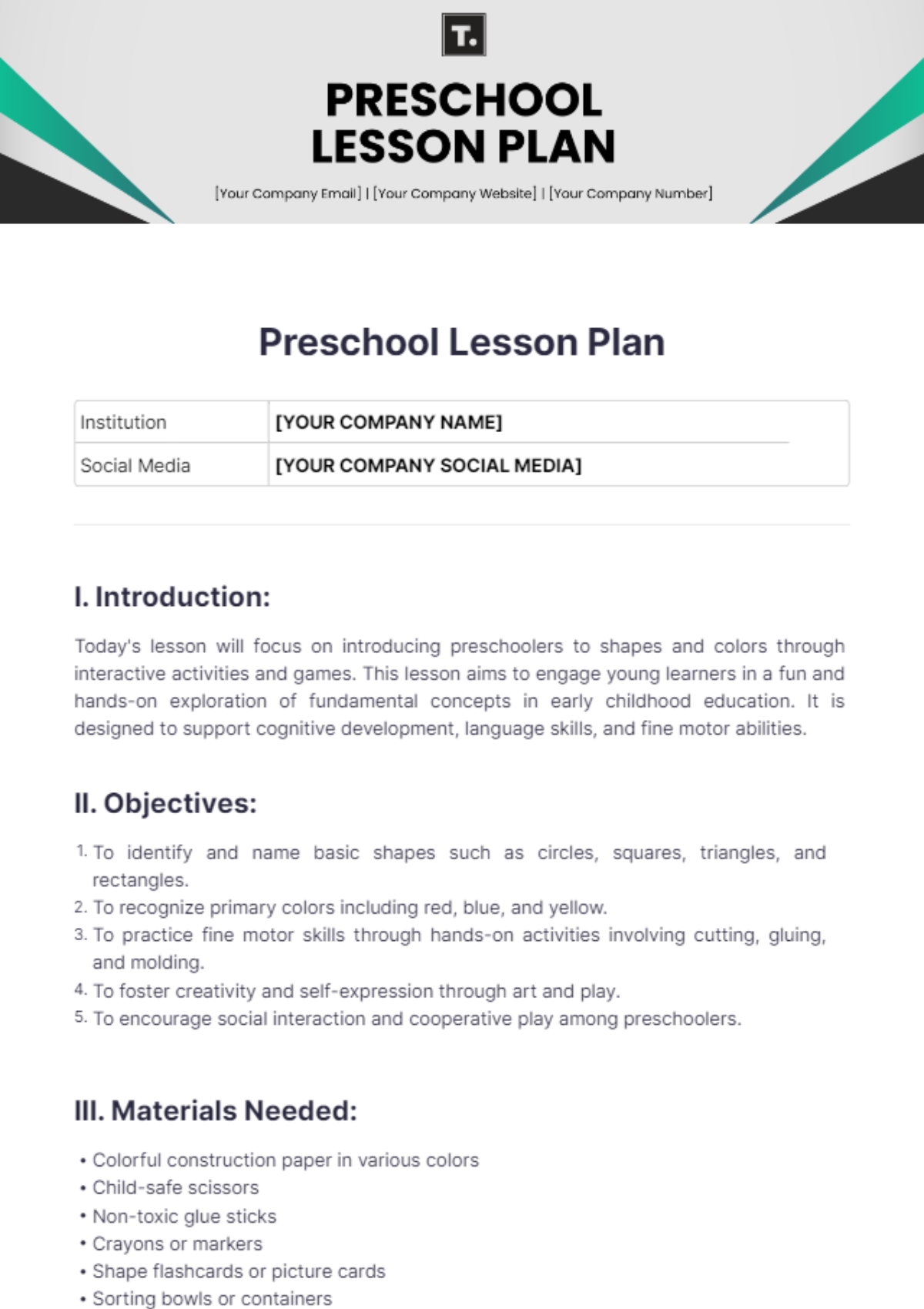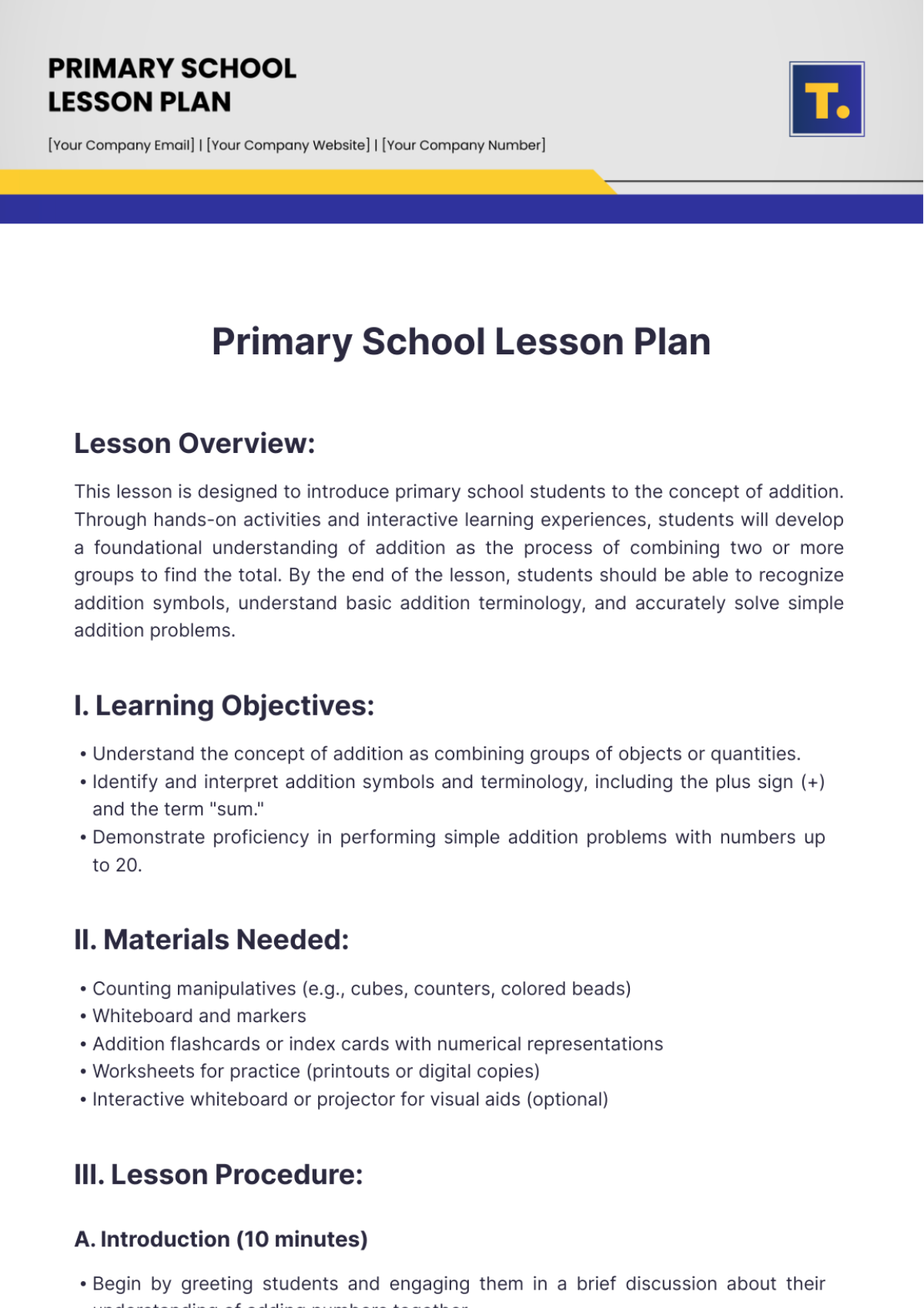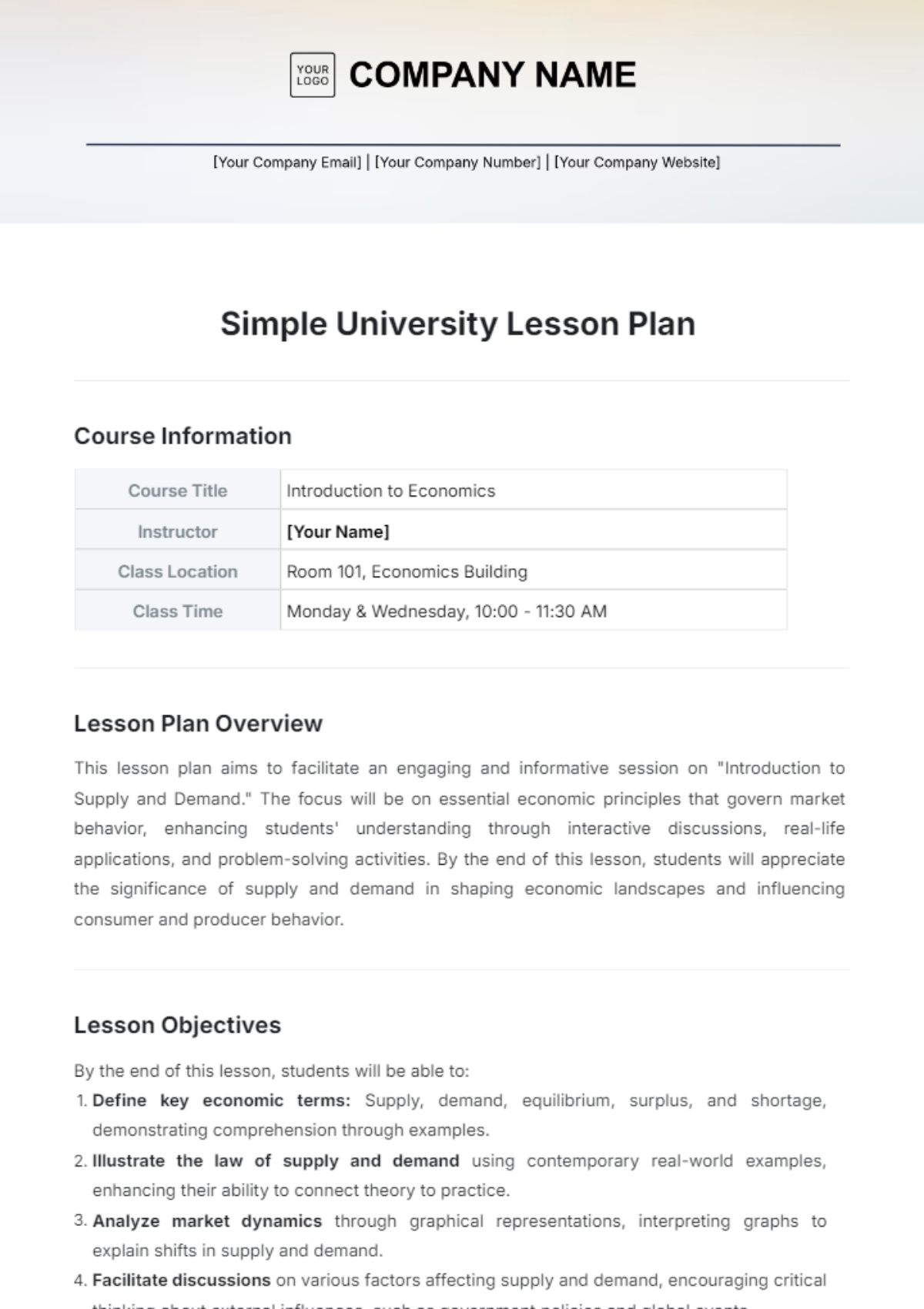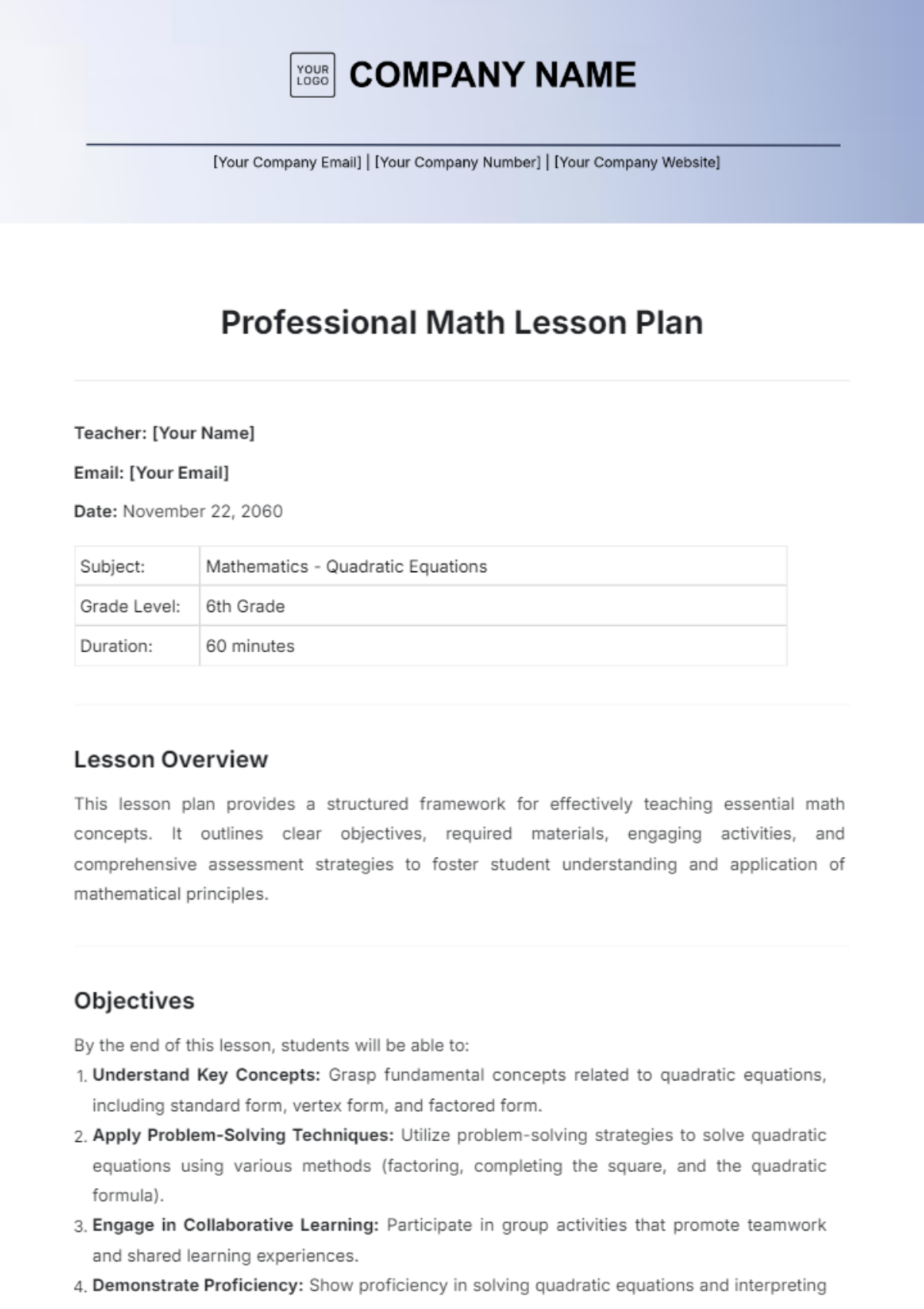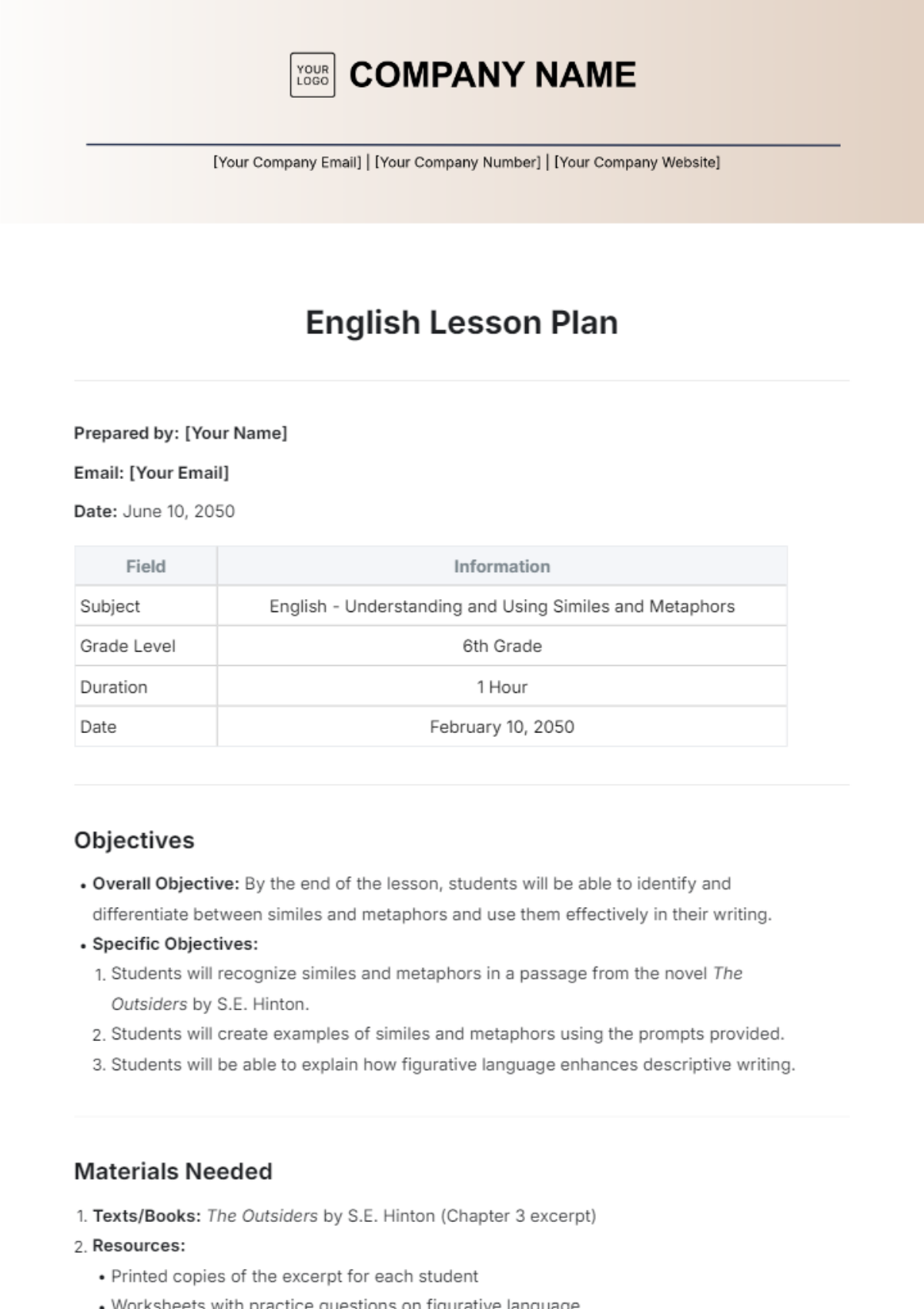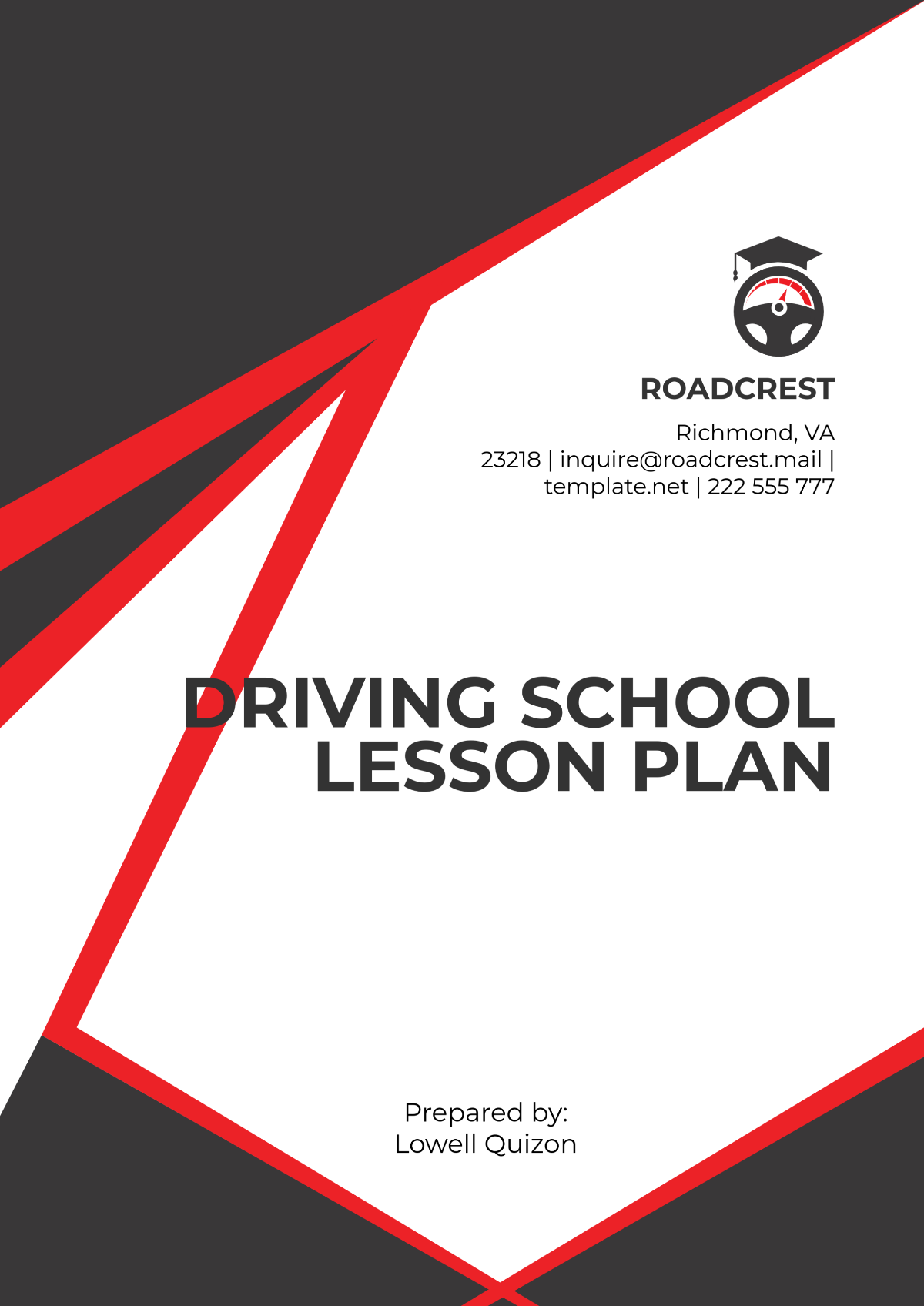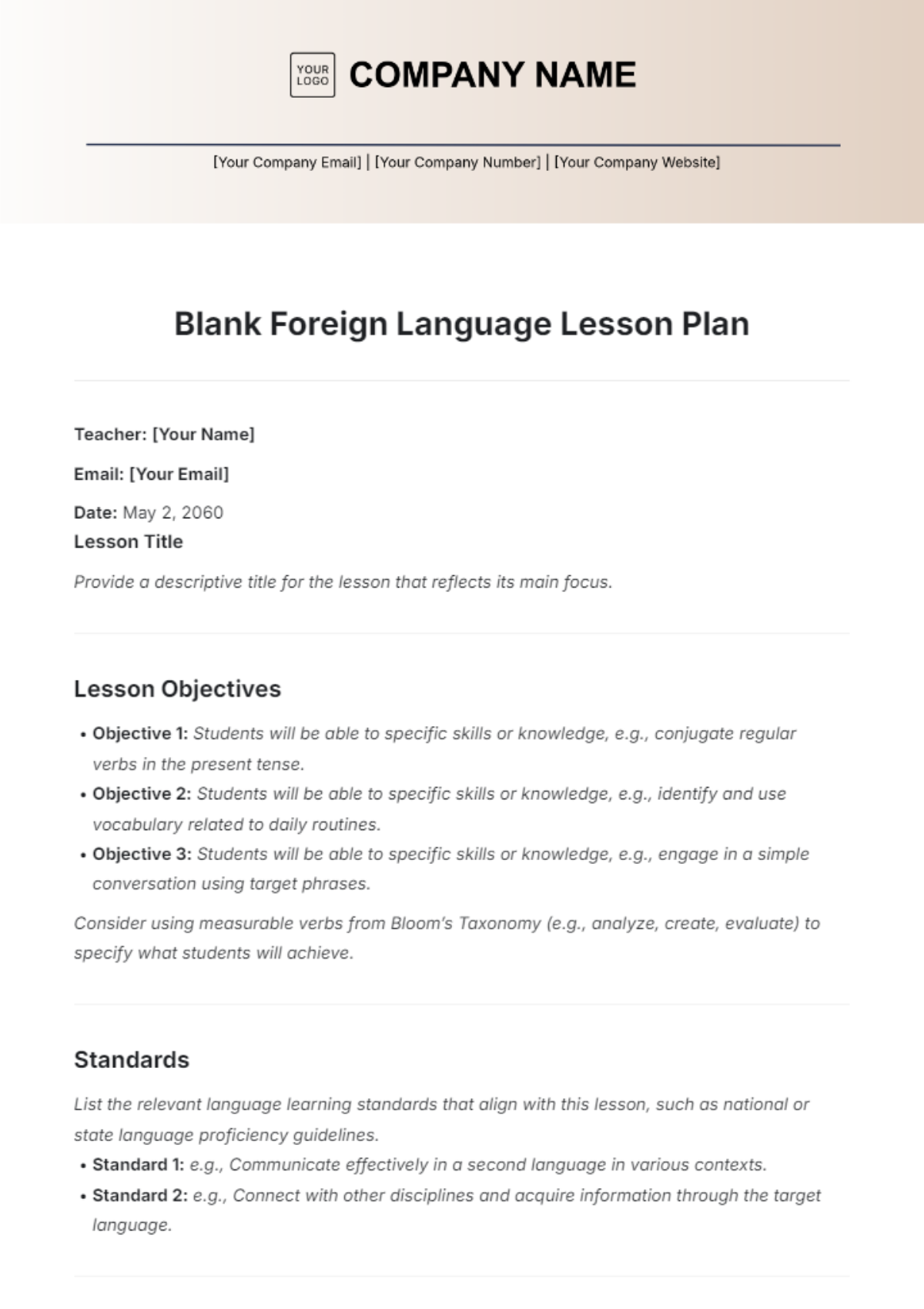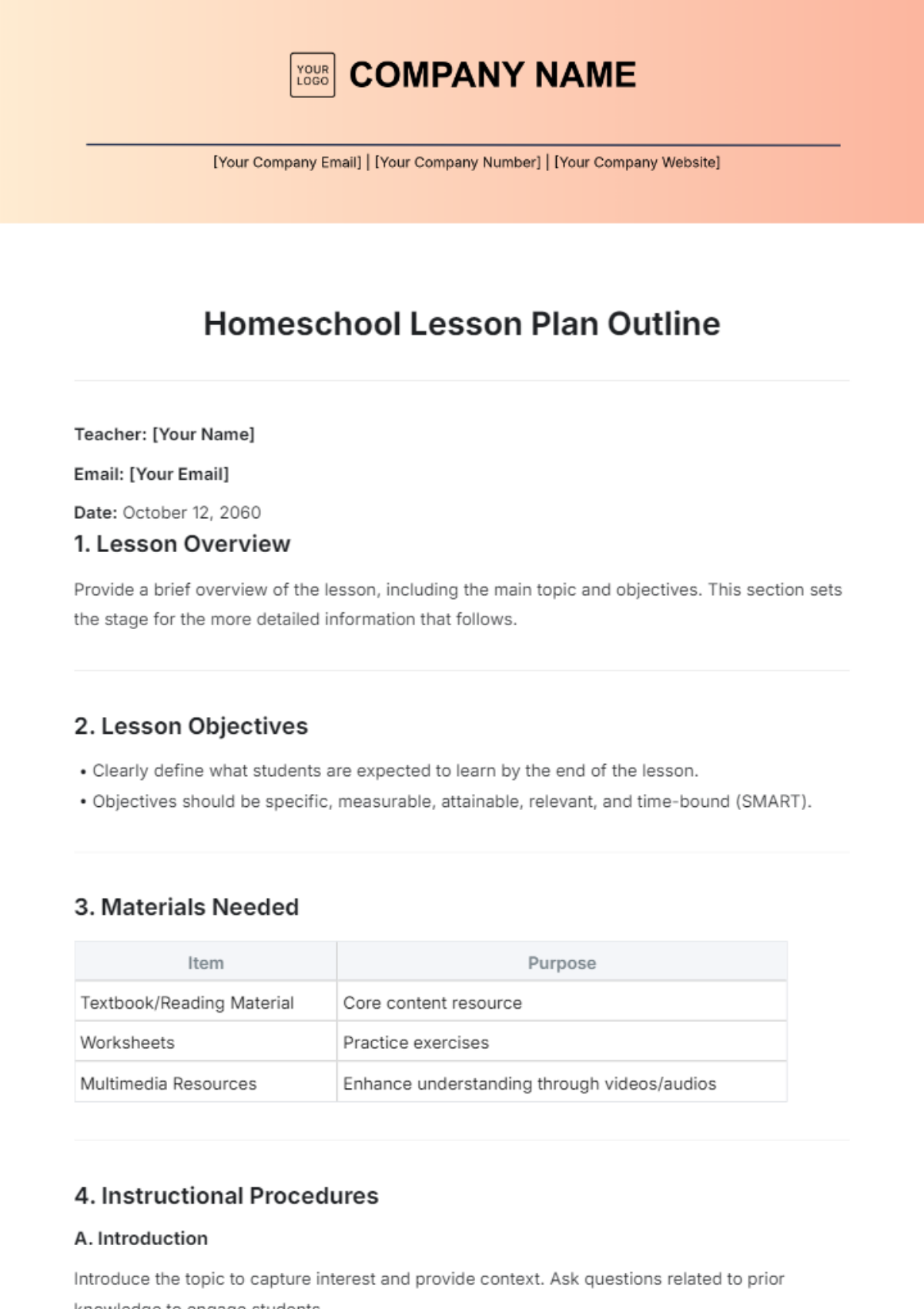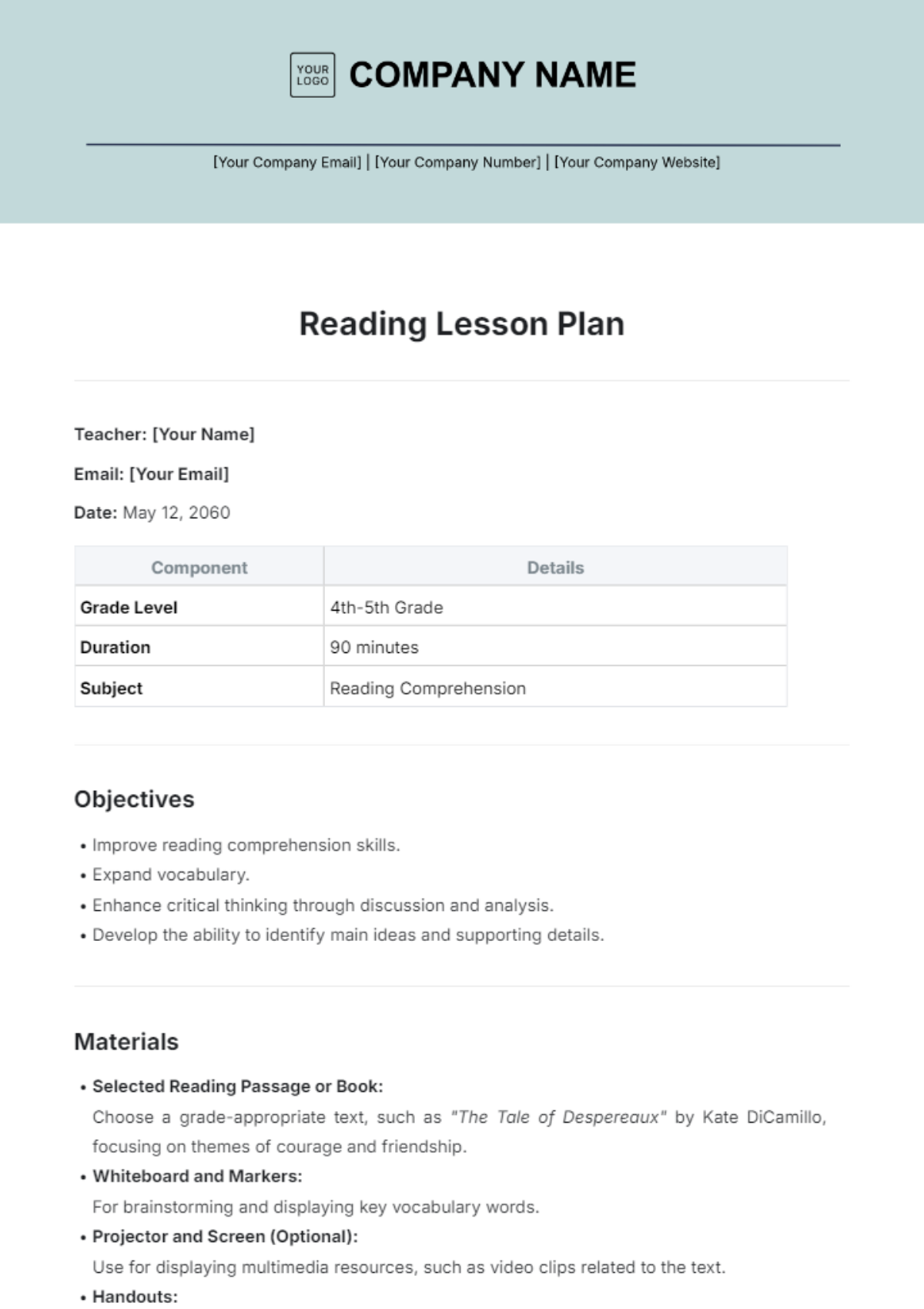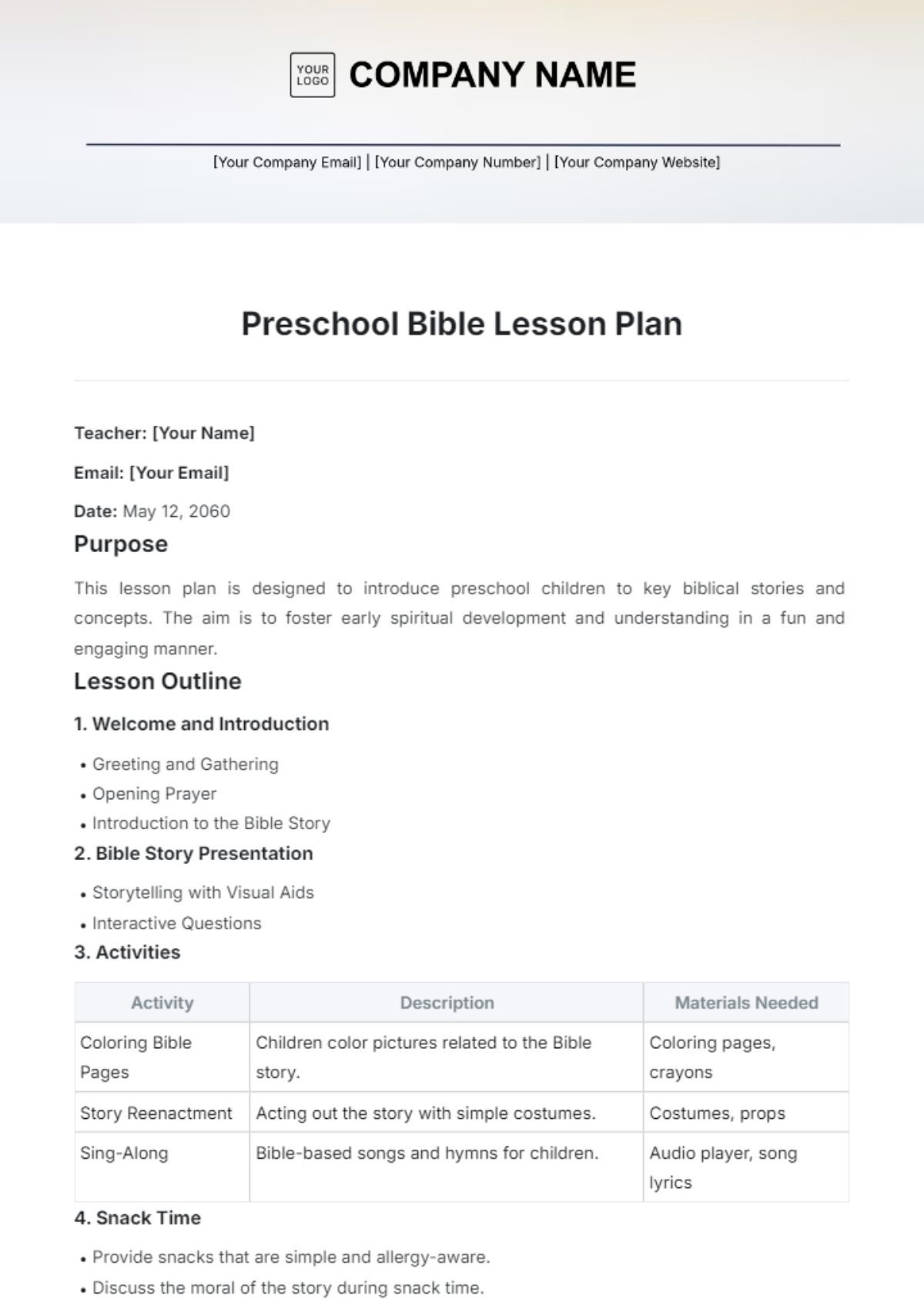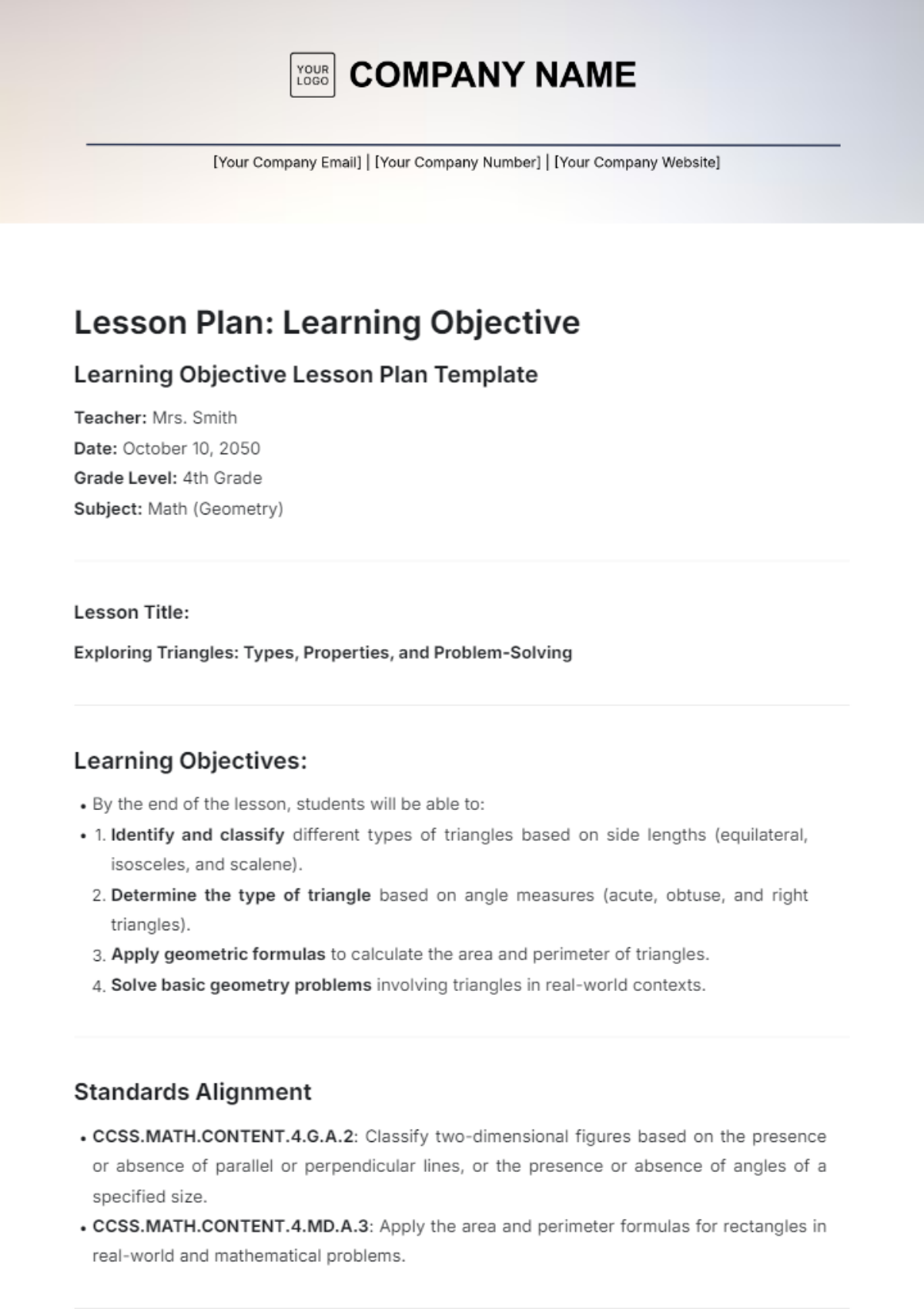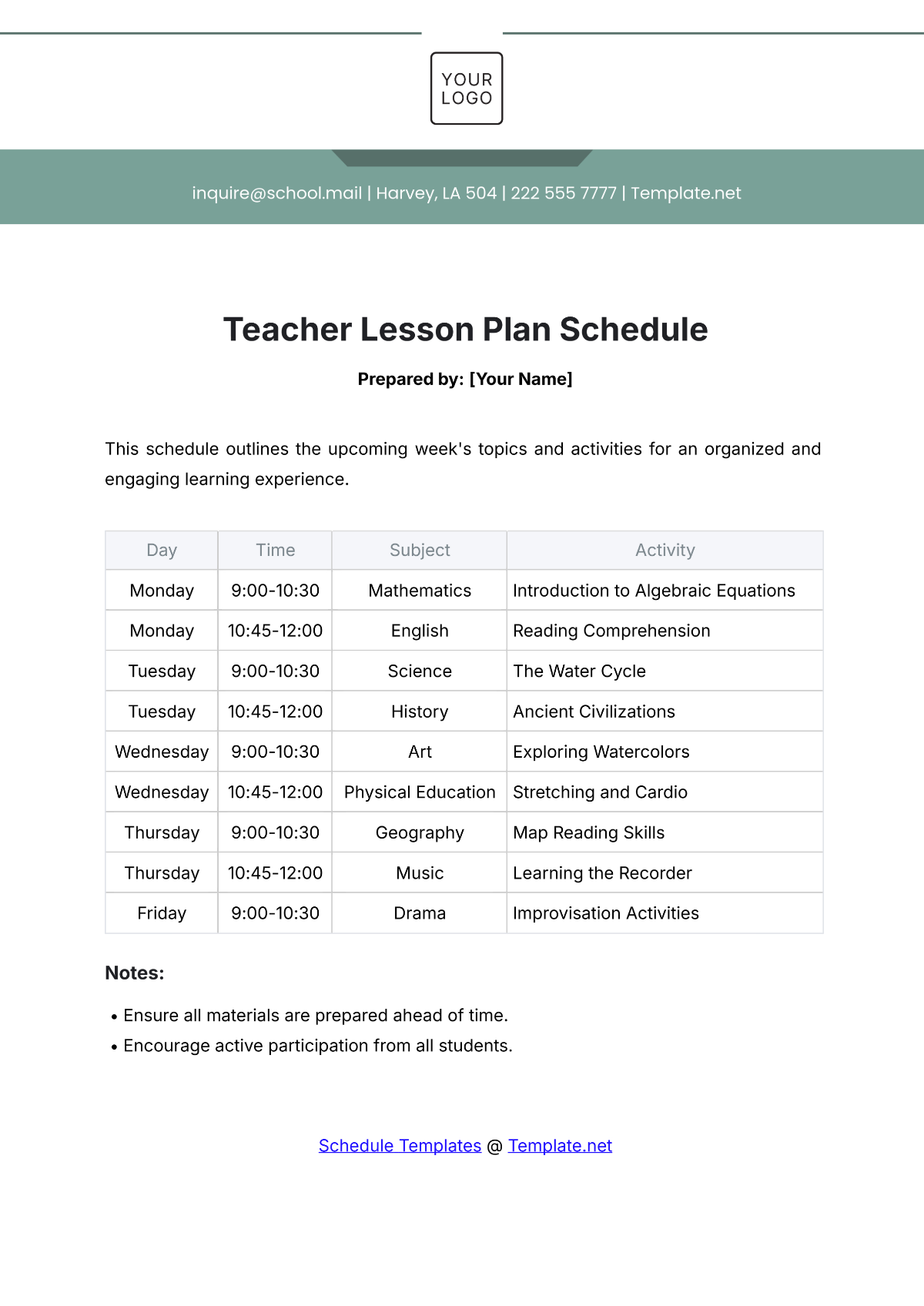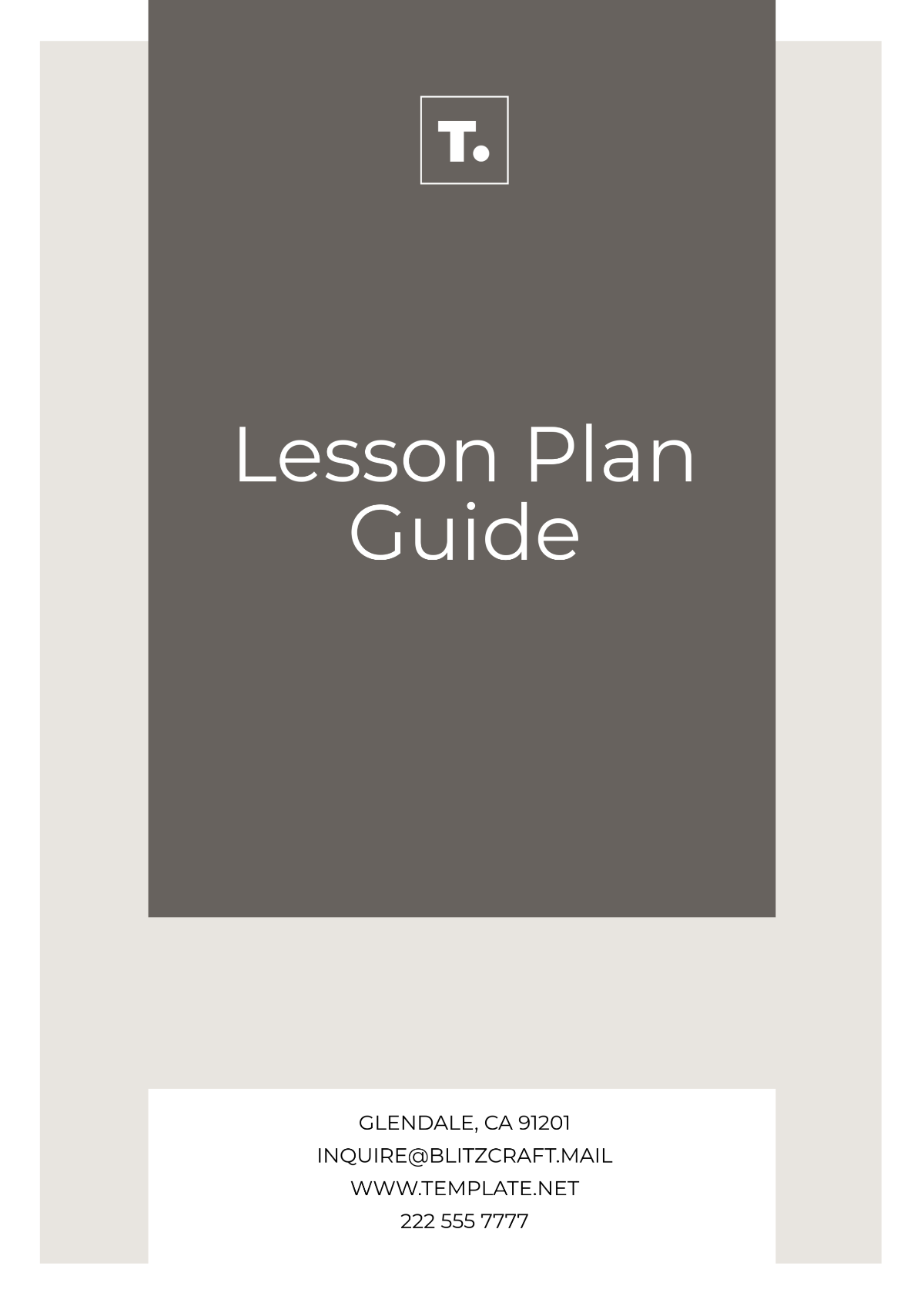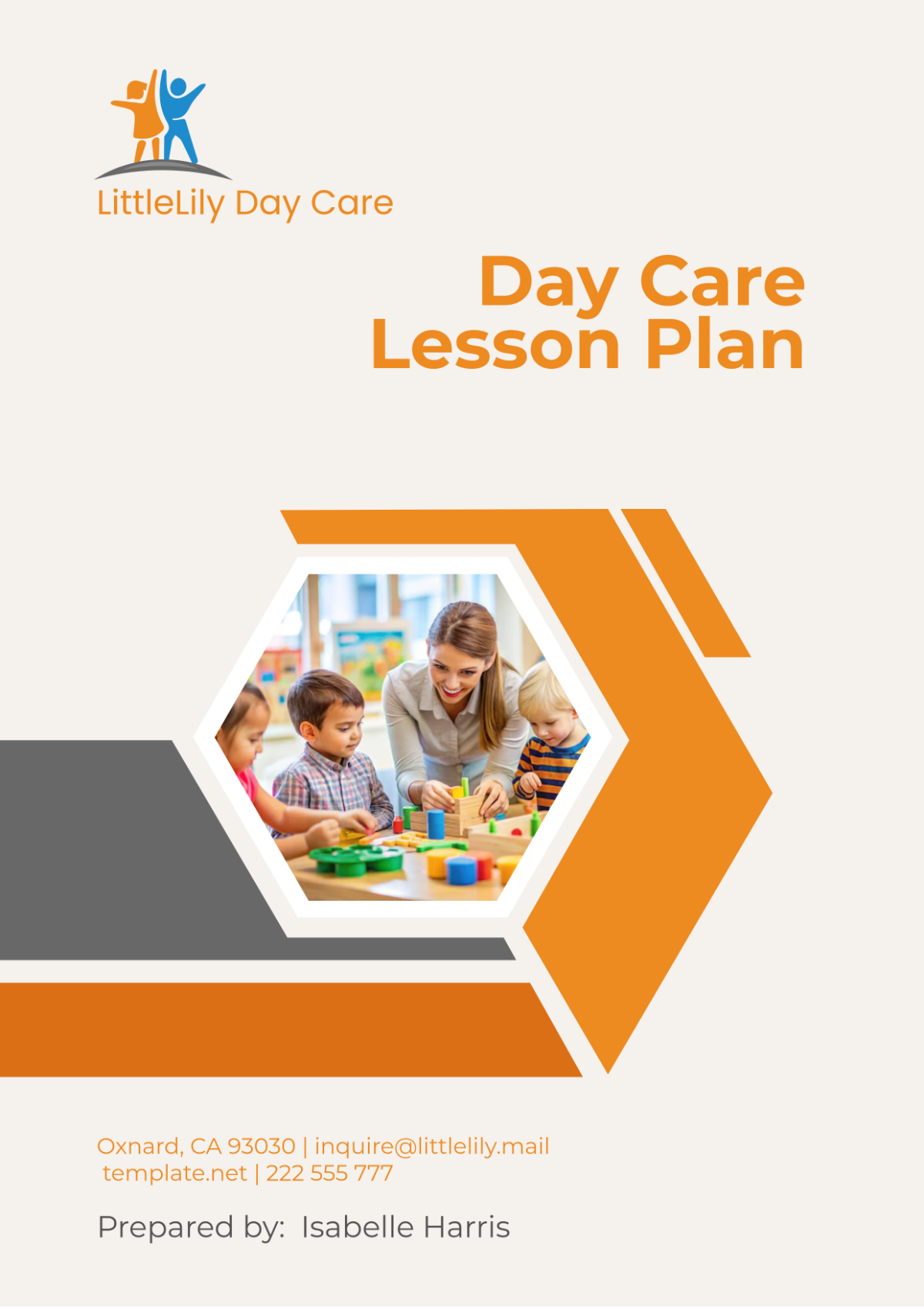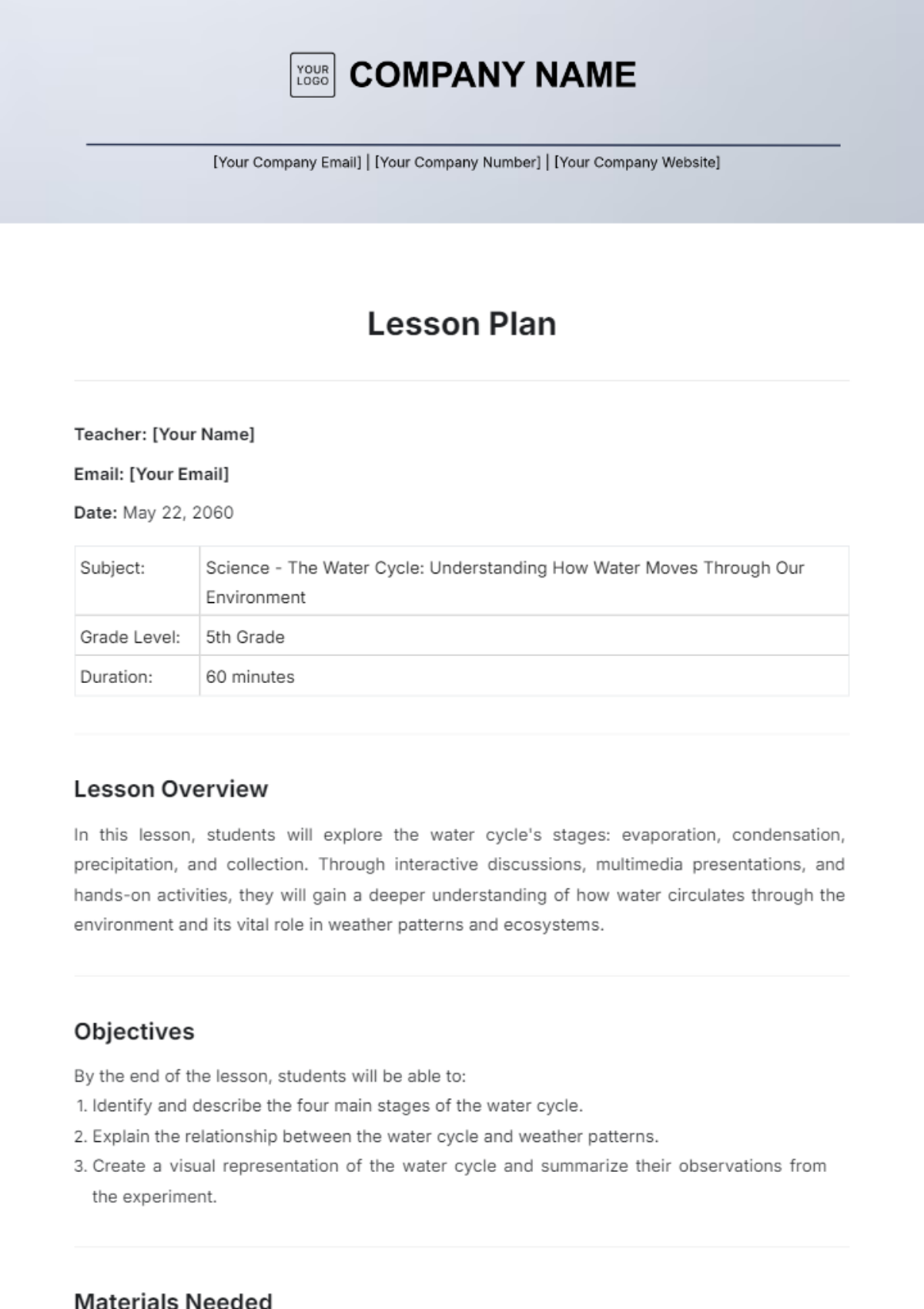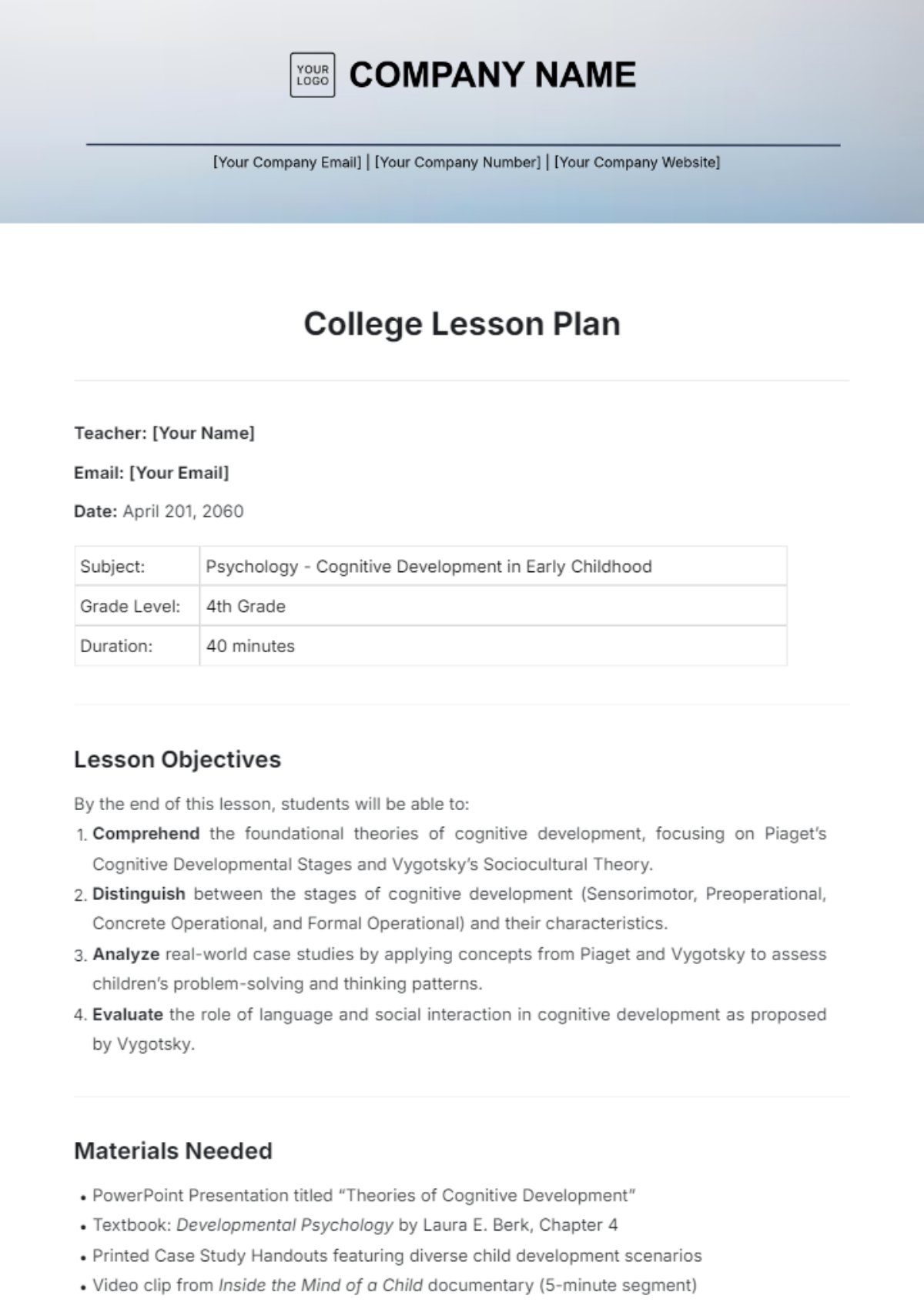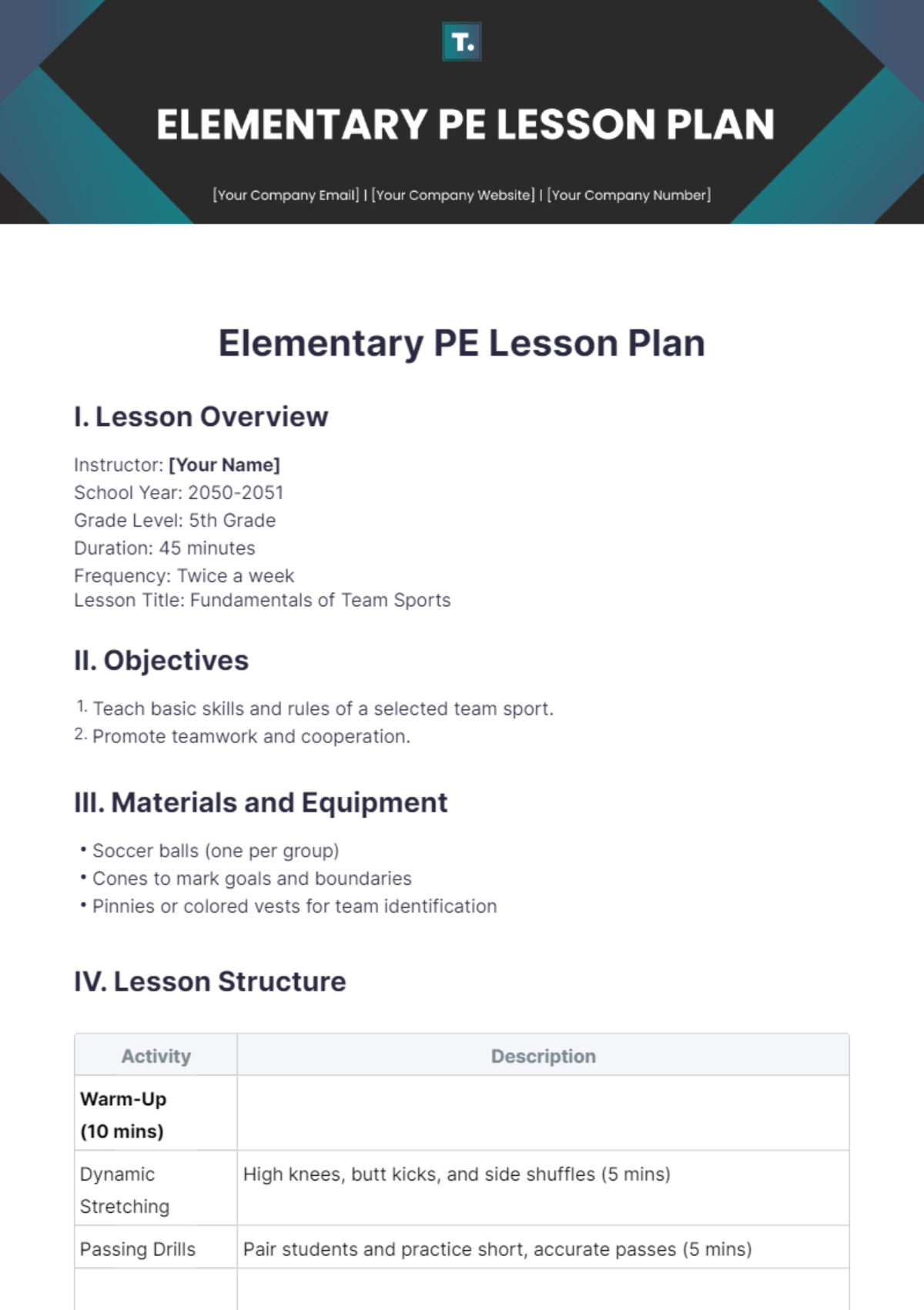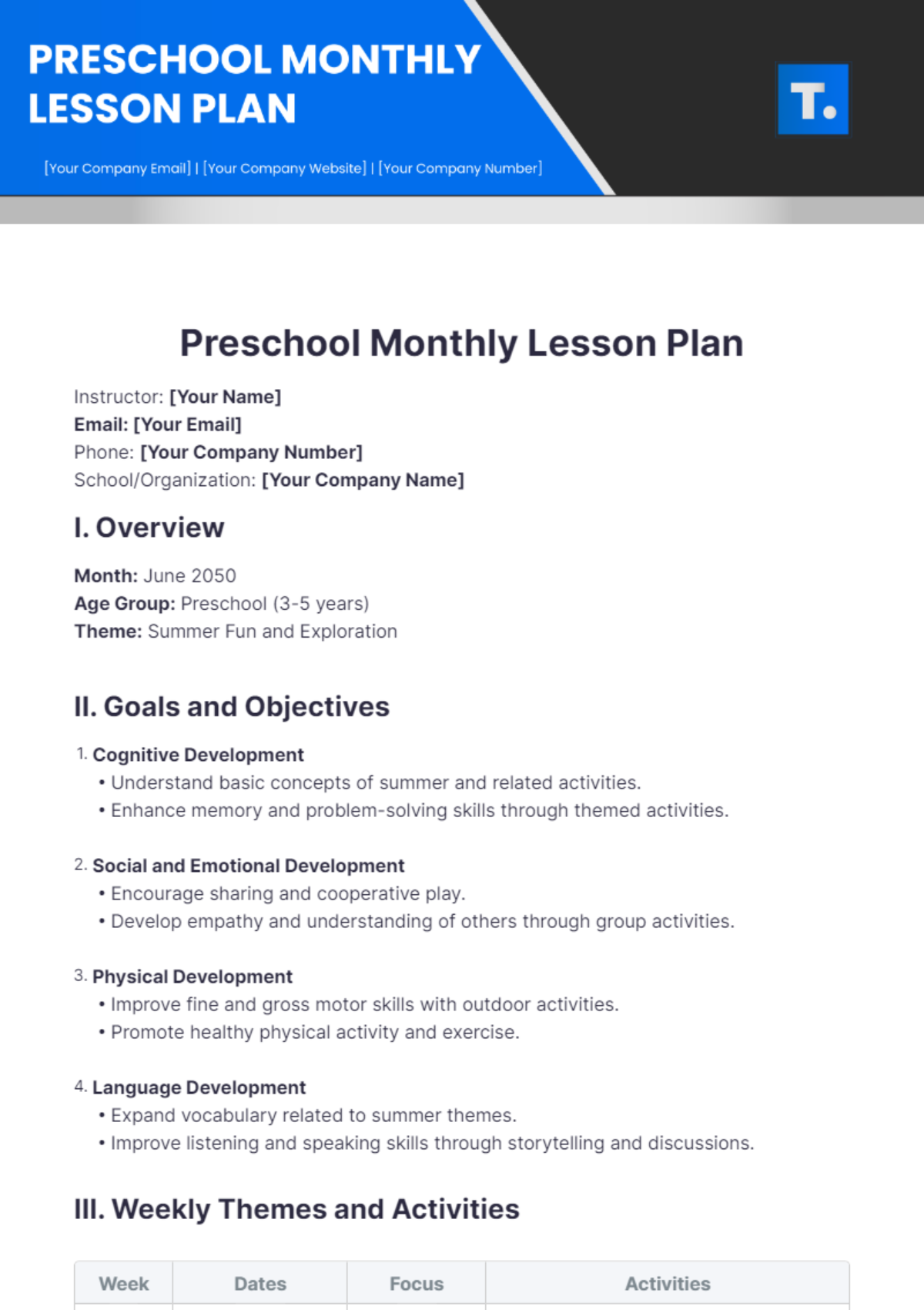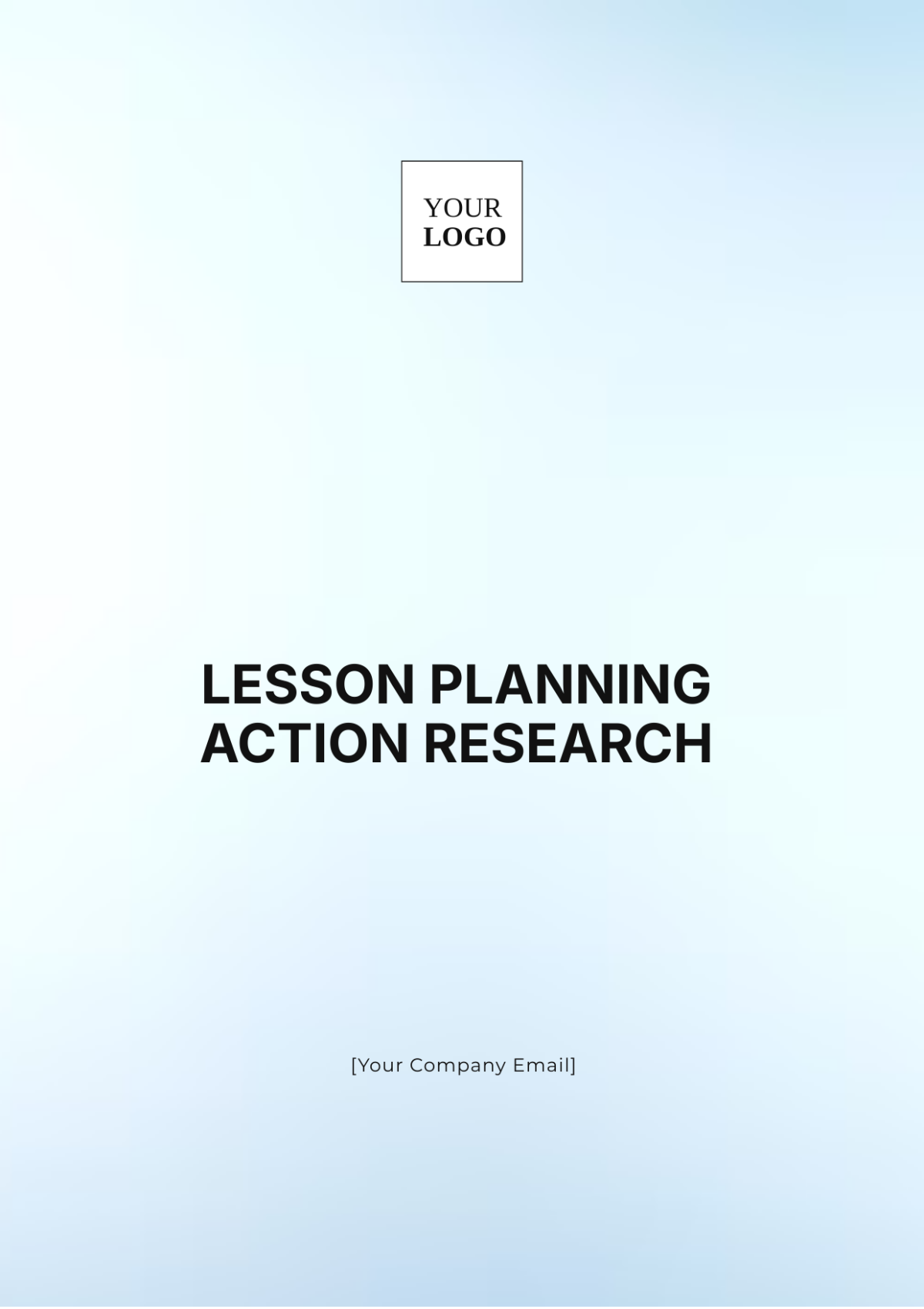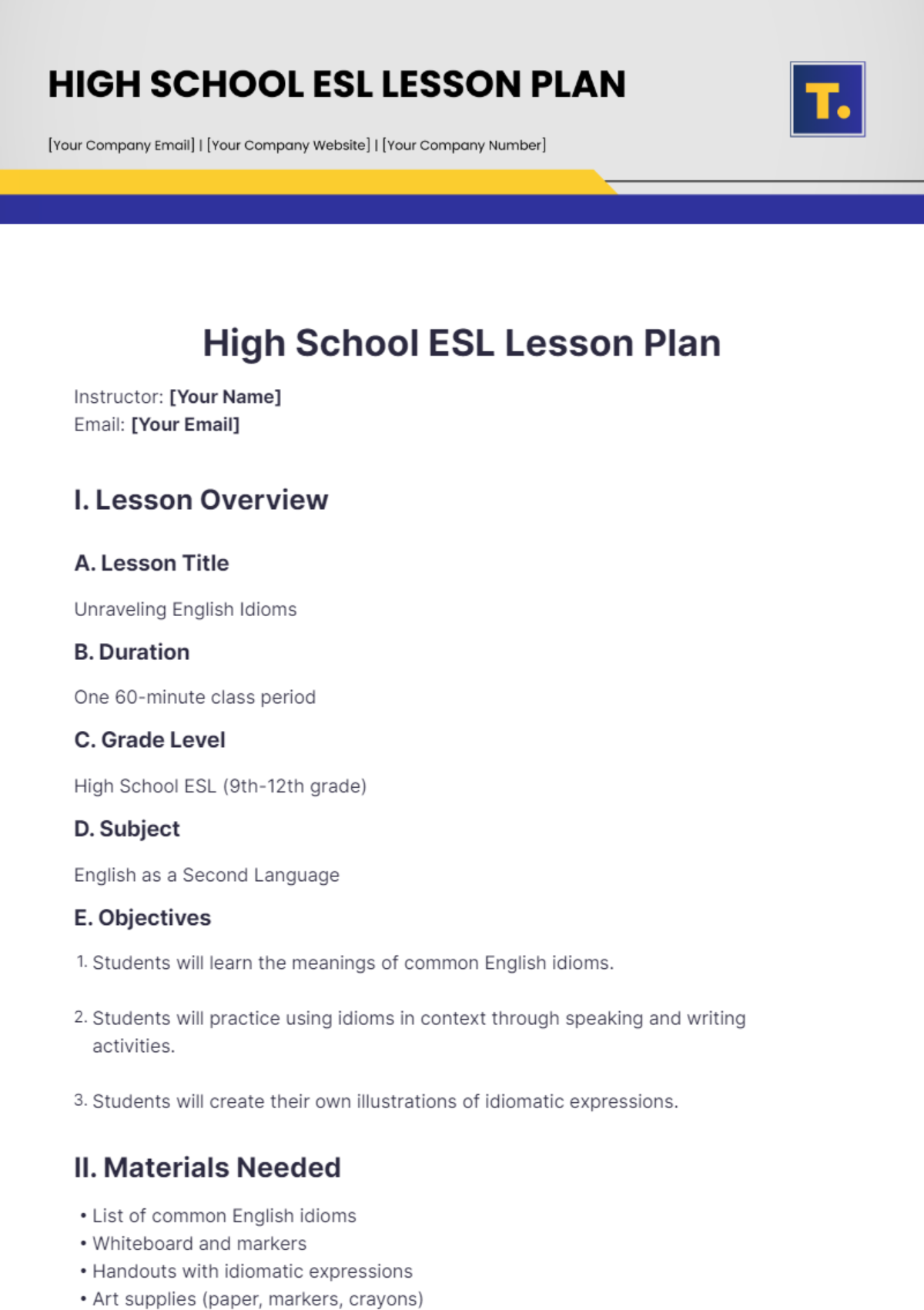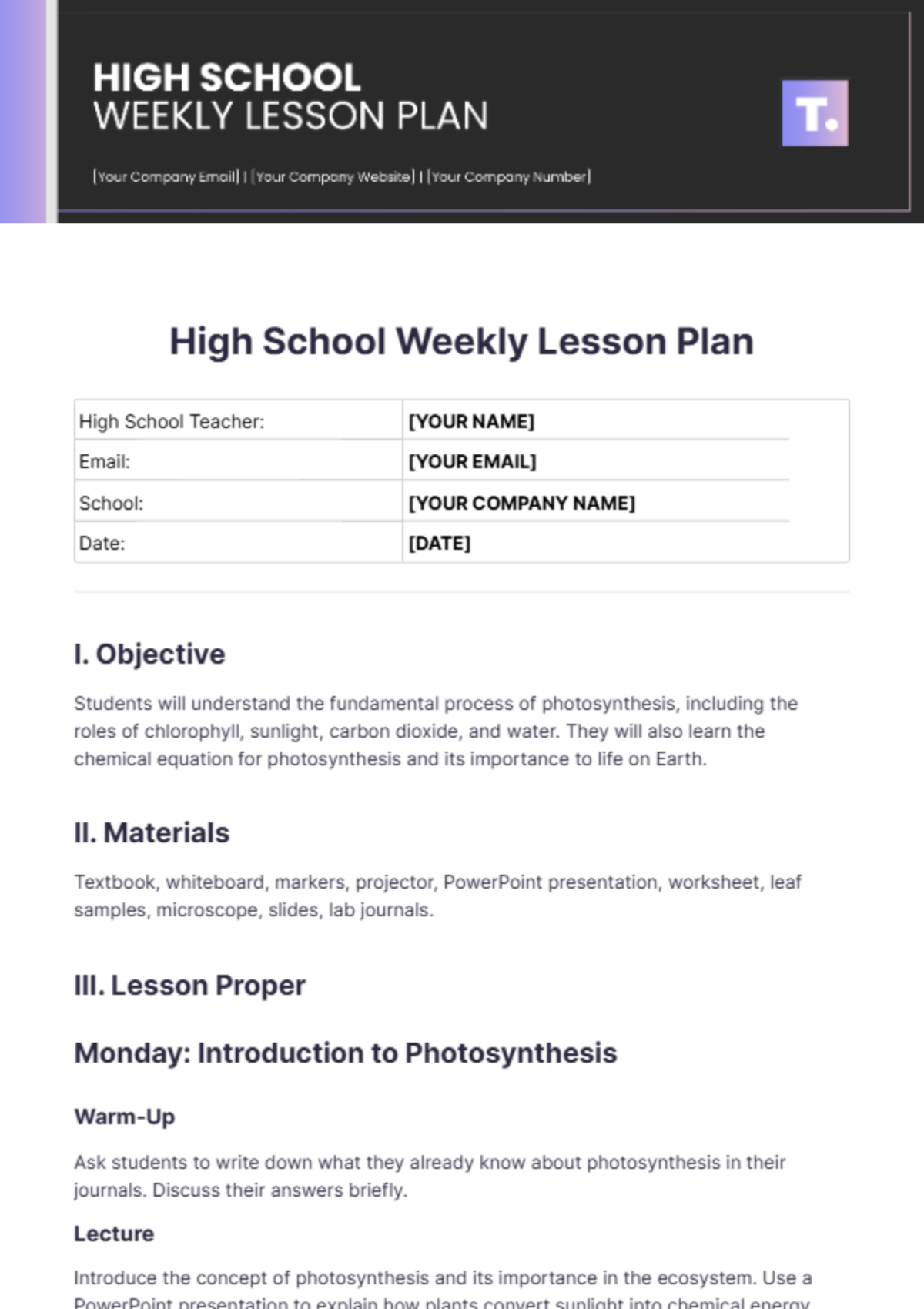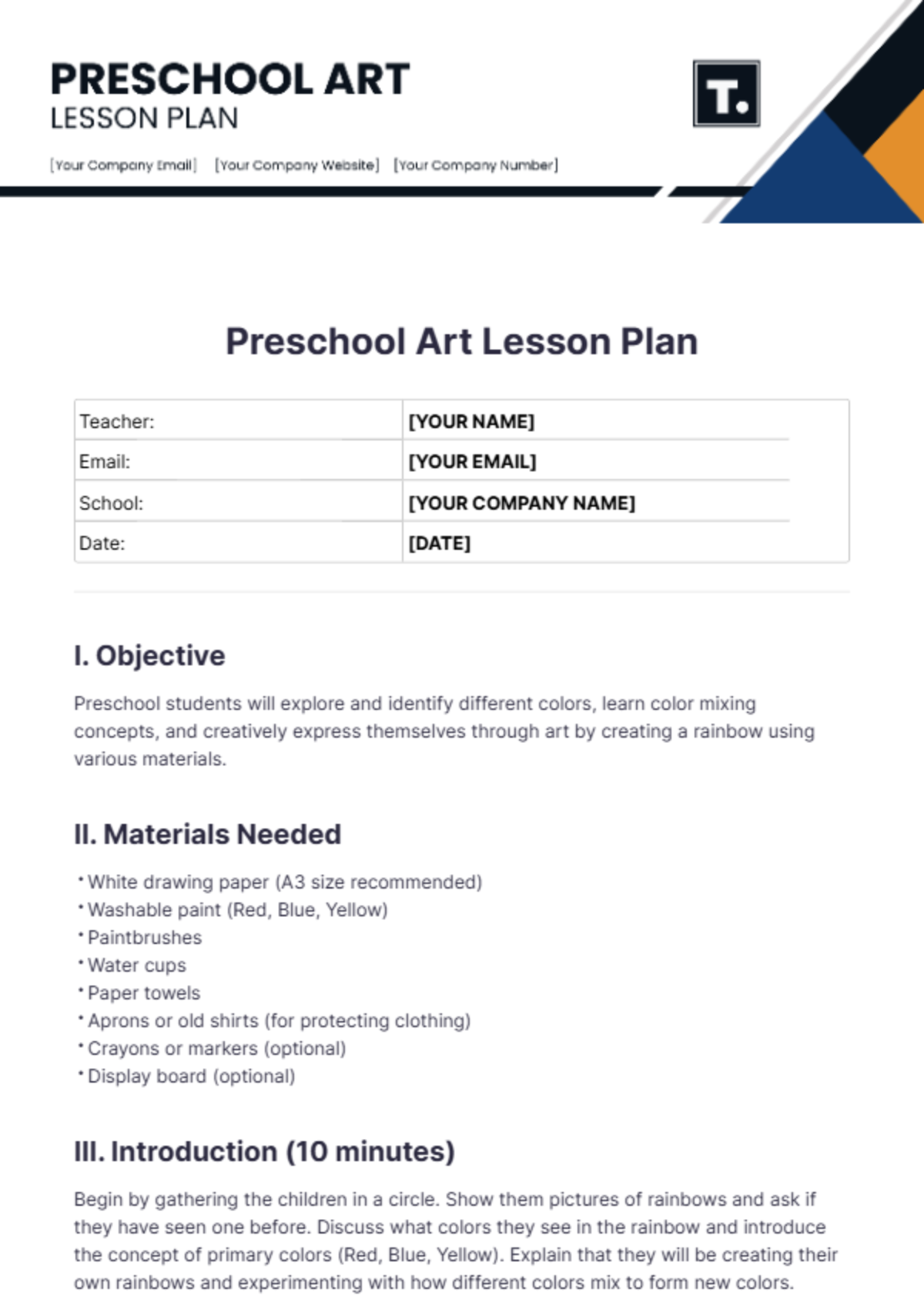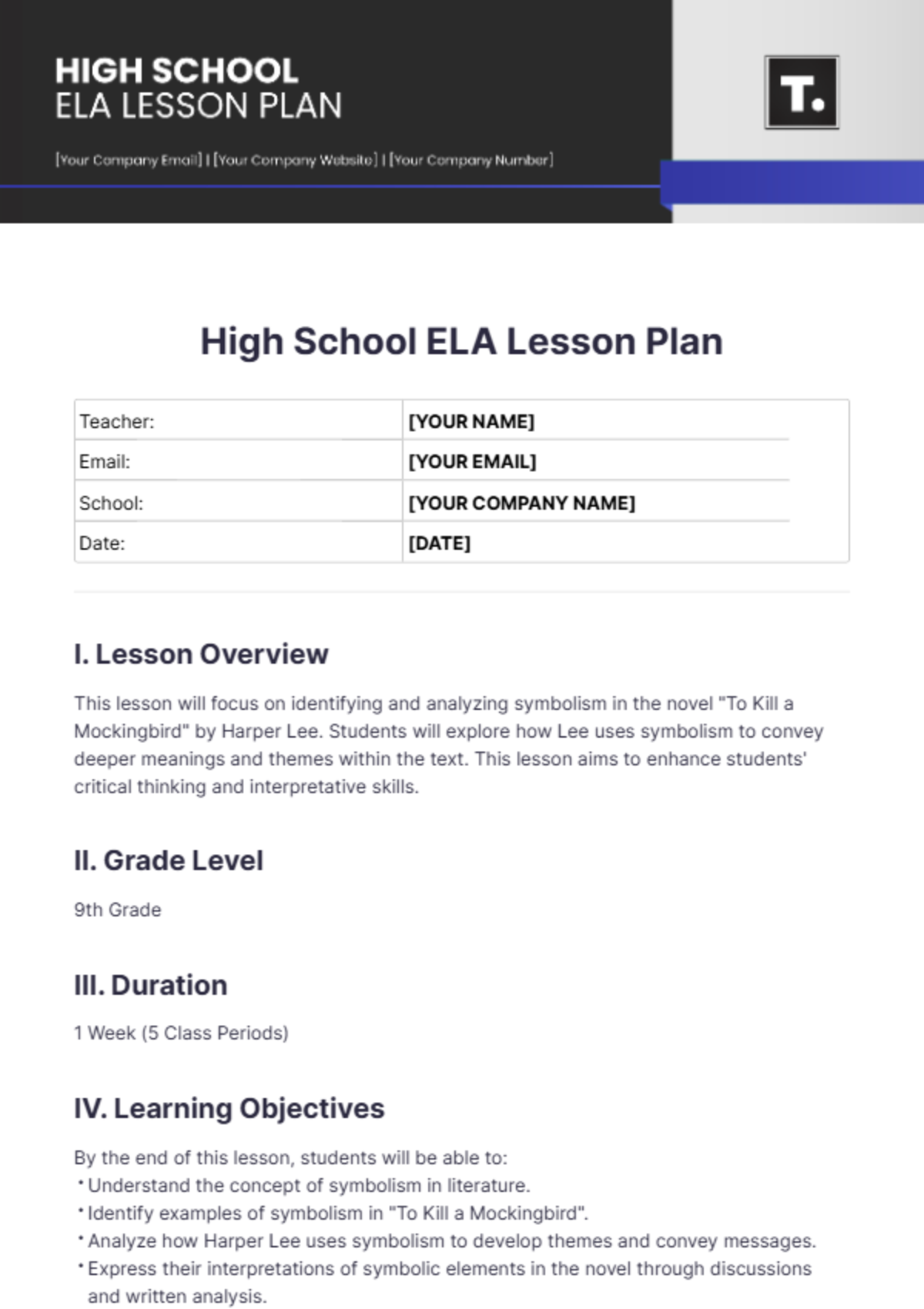BOTANY LESSON PLAN
I. Lesson Information
Subject: Botany
Grade Level: High School (9-12)
Duration: 60 minutes
Lesson Topic: Introduction to Plant Anatomy and Classification
Date: [Insert Date]
Professor: [Your Name]
II. Lesson Overview
A. Introduction to Plants
To set the stage, I'll commence with a captivating introduction, highlighting the pivotal role plants play in sustaining life on Earth. From their oxygen production to food provision, students will grasp the indispensable nature of plants in ecosystems and human societies.
Following this, we'll embark on a journey through the botanical world, exploring the staggering diversity of plant species. Through visual aids and anecdotes, I'll foster curiosity about the myriad forms and functions plants exhibit.
B. Plant Anatomy
Delving into the intricacies of plant anatomy, I'll guide students through a comprehensive examination of plant structures. From the anchoring roots to the photosynthetic leaves and reproductive flowers, each component will be dissected both conceptually and practically.
Equipped with microscopes, students will have the opportunity to peer into the microscopic realm of plant tissues. By observing prepared slides, they'll gain a firsthand understanding of the cellular architecture that underpins plant function.
C. Plant Classification
Plant classification, akin to unraveling nature's taxonomy, will be our next endeavor. I'll elucidate the hierarchical organization of plant taxa, from the broad divisions down to the minutiae of species.
Through interactive discussions and visual aids, students will journey through the botanical landscape, encountering major plant groups such as angiosperms, gymnosperms, ferns, and mosses. They'll discern the defining features of each group, enriching their understanding of plant diversity.
III. Learning Outcomes
A. Knowledge
By the lesson's conclusion, students should possess a comprehensive lexicon of plant anatomy, proficiently identifying and describing fundamental structures.
Understanding the symbiotic relationship between plant tissues and their roles in metabolism, support, and reproduction will be a cornerstone of their botanical knowledge.
Students will depart with a firm grasp of the Linnaean classification system, able to navigate the intricate web of plant taxonomy with confidence.
B. Skills
Through hands-on engagement with plant specimens and microscopic observations, students will hone their observational skills, discerning subtle morphological features.
Critical thinking will be fostered as students categorize plants based on observable characteristics, deciphering evolutionary relationships and ecological adaptations.
Collaborative learning opportunities, embedded within group activities and discussions, will cultivate effective communication skills and teamwork.
C. Attitudes
Instilling an appreciation for the intricate beauty and functional diversity of plants is paramount. By unveiling the hidden complexities of plant anatomy and classification, students will develop a profound reverence for the botanical realm.
Recognizing the ecological significance of plants, students will emerge as stewards of biodiversity, empowered to advocate for conservation efforts.
Fostering curiosity and enthusiasm for botany, this lesson aims to ignite a lifelong passion for scientific inquiry and environmental stewardship.
IV. Materials Required
Materials | Quantity |
|---|---|
Plant specimens | 1 per group |
Microscopes | 1 per group |
Prepared slides | As needed |
Whiteboard or chart paper | 1 |
Markers | As needed |
Textbooks or reference books | 1 per student |
Worksheets or handouts | As needed |
V. Lesson Structure
Time | Activity |
|---|---|
5 mins | Engaging Introduction and Warm-up |
10 mins | In-depth Exploration of Plant Anatomy |
15 mins | Hands-on Activity: Plant Dissection |
15 mins | Interactive Discussion on Plant Classification |
10 mins | Group Presentation: Highlighting Different Plant Groups |
5 mins | Thoughtful Wrap-up and Reflection |
VI. Assessment
Continuous assessment through observation and questioning will gauge student engagement and understanding.
Summative assessment will be conducted via the completion of worksheets designed to evaluate comprehension.
Peer evaluation of group presentations will encourage students to critically assess each other's work, fostering a culture of constructive feedback.
VII. Reflection
As the lesson draws to a close, students will embark on a reflective journey, contemplating their newfound knowledge and insights. Through guided prompts, they'll articulate their reflections, fostering metacognitive awareness and consolidating their learning experience. This reflective exercise serves as a springboard for further inquiry, igniting the flames of curiosity that define the spirit of scientific exploration.

